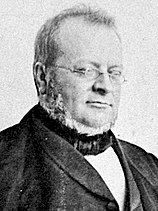History of the Kingdom of Italy (1861–1946): Difference between revisions
LukeWiller (talk | contribs) →Racial Laws: + main |
LukeWiller (talk | contribs) →Racial Laws: copied content from Italian racial laws; see that page's history for attribution |
||
| Line 296: | Line 296: | ||
The [[Italian racial laws]], otherwise referred to as the Racial Laws, were a series of laws which were promulgated by the [[Italian Parliament (1928–1939)|Council of Ministers]] in [[Fascist Italy (1922–1943)|Fascist Italy]] (1922–1943) from 1938 to 1943 in order to enforce [[racial discrimination]] and [[Racial segregation|segregation]] in the Kingdom of Italy. The main victims of the Racial Laws were [[Italian Jews]] and the [[Ethnic groups of Africa|native African inhabitants]] of the [[Italian Empire|Italian colonial empire]] (1923–1947).<ref name="Shinn 2019">{{cite book |author-last=Shinn |author-first=Christopher A. |year=2019 |origyear=2016 |chapter=Inside the Italian Empire: Colonial Africa, Race Wars, and the ‘Southern Question’ |editor-last=Kirkland |editor-first=Ewan |title=Shades of Whiteness |location=[[Leiden]] and [[Boston]] |publisher=[[Brill Publishers]] |pages=35–51 |doi=10.1163/9781848883833_005 |isbn=978-1-84888-383-3 |s2cid=201401541}}</ref><ref name="Gentile 2004">{{cite book |author-last=Gentile |author-first=Emilio |author-link=Emilio Gentile |year=2004 |chapter=Fascism in Power: The Totalitarian Experiment |chapter-url=https://books.google.com/books?id=xeHuSpHzqGUC&pg=PA44 |editor1-last=Griffin |editor1-first=Roger |editor2-last=Feldman |editor2-first=Matthew |title=Fascism: Critical Concepts in Political Science |location=[[London]] and [[New York City|New York]] |publisher=[[Routledge]] |edition=1st |volume=IV |pages=44–45 |isbn=9780415290159}}</ref><ref name="Negash 1997">{{cite book |author-last=Negash |author-first=Tekeste |year=1997 |title=Eritrea and Ethiopia: The Federal Experience |chapter=Introduction: The legacy of Italian colonialism |chapter-url=https://books.google.com/books?id=CBrImoJfFboC&pg=PA17 |location=[[Uppsala]] |publisher=[[Nordic Africa Institute|Nordiska Afrikainstitutet]] |pages=13–17 |isbn=978-91-7106-406-6 |oclc=1122565258}}</ref> In the aftermath of [[Fall of the Fascist regime in Italy#Events of 24–25 July 1943|Mussolini's fall from power]], the [[Badoglio I Cabinet|Badoglio government]] suppressed the Racial Laws in the Kingdom of Italy. They remained enforced and were made more severe in the territories ruled by the [[Italian Social Republic]] (1943–1945) until the [[End of World War II in Europe|end of the Second World War]].<ref name="Gentile 2004"/> |
The [[Italian racial laws]], otherwise referred to as the Racial Laws, were a series of laws which were promulgated by the [[Italian Parliament (1928–1939)|Council of Ministers]] in [[Fascist Italy (1922–1943)|Fascist Italy]] (1922–1943) from 1938 to 1943 in order to enforce [[racial discrimination]] and [[Racial segregation|segregation]] in the Kingdom of Italy. The main victims of the Racial Laws were [[Italian Jews]] and the [[Ethnic groups of Africa|native African inhabitants]] of the [[Italian Empire|Italian colonial empire]] (1923–1947).<ref name="Shinn 2019">{{cite book |author-last=Shinn |author-first=Christopher A. |year=2019 |origyear=2016 |chapter=Inside the Italian Empire: Colonial Africa, Race Wars, and the ‘Southern Question’ |editor-last=Kirkland |editor-first=Ewan |title=Shades of Whiteness |location=[[Leiden]] and [[Boston]] |publisher=[[Brill Publishers]] |pages=35–51 |doi=10.1163/9781848883833_005 |isbn=978-1-84888-383-3 |s2cid=201401541}}</ref><ref name="Gentile 2004">{{cite book |author-last=Gentile |author-first=Emilio |author-link=Emilio Gentile |year=2004 |chapter=Fascism in Power: The Totalitarian Experiment |chapter-url=https://books.google.com/books?id=xeHuSpHzqGUC&pg=PA44 |editor1-last=Griffin |editor1-first=Roger |editor2-last=Feldman |editor2-first=Matthew |title=Fascism: Critical Concepts in Political Science |location=[[London]] and [[New York City|New York]] |publisher=[[Routledge]] |edition=1st |volume=IV |pages=44–45 |isbn=9780415290159}}</ref><ref name="Negash 1997">{{cite book |author-last=Negash |author-first=Tekeste |year=1997 |title=Eritrea and Ethiopia: The Federal Experience |chapter=Introduction: The legacy of Italian colonialism |chapter-url=https://books.google.com/books?id=CBrImoJfFboC&pg=PA17 |location=[[Uppsala]] |publisher=[[Nordic Africa Institute|Nordiska Afrikainstitutet]] |pages=13–17 |isbn=978-91-7106-406-6 |oclc=1122565258}}</ref> In the aftermath of [[Fall of the Fascist regime in Italy#Events of 24–25 July 1943|Mussolini's fall from power]], the [[Badoglio I Cabinet|Badoglio government]] suppressed the Racial Laws in the Kingdom of Italy. They remained enforced and were made more severe in the territories ruled by the [[Italian Social Republic]] (1943–1945) until the [[End of World War II in Europe|end of the Second World War]].<ref name="Gentile 2004"/> |
||
The first and most important of the Racial Laws (''Leggi Razziali'') was the Regio Decreto 17 Novembre 1938, Nr. 1728. It restricted the civil rights of [[Italian Jews]], banned books written by Jewish authors, and excluded Jews from public offices and higher education.<ref name="Shinn 2019"/> Additional laws stripped Jews of their assets, restricted travel, and finally, provided for their confinement in internal exile, as was done for [[political prisoners]].<ref name="Shinn 2019"/> In recognition of both their past and future contributions and for their service as subjects of the [[Italian Empire]], Rome passed a decree in 1937 distinguishing the [[Eritreans]] and [[Ethiopians]] from other subjects of the newly-founded colonial empire.<ref name="Shinn 2019"/><ref name="Negash 1997"/> In the Kingdom of Italy, Eritreans and Ethiopians were to be addressed as "[[Ethnic groups of Africa|Africans]]" and not as natives, as was the case with the other African peoples subjected to the colonial rule of the Italian Empire.<ref name="Negash 1997"/> |
|||
The promulgation of the Racial Laws was preceded by a long press campaign and publication of the "[[Manifesto of Race]]" earlier in 1938, a purportedly-scientific report signed by scientists and supporters of the [[National Fascist Party]] (PNF); among the 180 signers of the "Manifesto of Race" were two medical doctors (S. Visco and N. Fende), an anthropologist (L. Cipriani), a zoologist ([[Edoardo Zavattari|E. Zavattari]]), and a statistician (F. Savorgnan).<ref>{{cite book |title= Le leggi razziali in Italia e il Vaticano|last= Giovanni Sale|year= 2009|publisher= Editoriale Jaca Book|isbn= 9788816409071|page= 72|url= https://books.google.com/books?id=jye53aCQbkYC&pg=PA72 }}</ref> The "Manifesto of Race", published in July 1938, declared the [[Italians]] to be descendants of the [[Aryan race]].<ref name="Shinn 2019"/> It targeted races that were seen as inferior (i.e. not of Aryan descent). In particular, Jews were banned from many professions.<ref name="Shinn 2019"/> Under the Racial Laws, sexual relations and marriages between Italians, Jews, and Africans were forbidden.<ref name="Shinn 2019"/> Jews were banned from positions in banking, government, and education, as well as having their properties confiscated.<ref name="Morgan2003">{{cite book|author=Philip Morgan|title=Italian Fascism, 1915-1945|date=10 November 2003|publisher=Palgrave Macmillan|isbn=978-0-230-80267-4|page=202}}</ref><ref name="Rodogno2006">{{cite book|author=Davide Rodogno|title=Fascism's European Empire: Italian Occupation During the Second World War|date=3 August 2006|publisher=Cambridge University Press|isbn=978-0-521-84515-1|page=65}}</ref> |
|||
The final decision about the Racial Laws was made during the meeting of the [[Gran Consiglio del Fascismo]], which took place on the night between 6 and 7 of October 1938 in [[Rome]], [[Palazzo Venezia]]. Not all Italian Fascists supported discrimination: while the pro-German, anti-Jewish [[Roberto Farinacci]] and [[Giovanni Preziosi]] strongly pushed for them, [[Italo Balbo]] strongly opposed the Racial Laws. The Racial Laws prohibited Jews from most professional positions as well as prohibited sexual relations and marriages between Italians, Jews, and Africans.<ref name="Morgan2003">{{cite book|author=Philip Morgan|title=Italian Fascism, 1915-1945|date=10 November 2003|publisher=Palgrave Macmillan|isbn=978-0-230-80267-4|page=202}}</ref> The press in Fascist Italy highly publicized the "Manifesto of Race", which included a mixture of biological racism and history; it declared that Italians belonged to the Aryan race, Jews were not Italians, and that it was necessary to distinguish between [[Europeans]] and non-Europeans.<ref>Joshua D. Zimmerman, ''Jews in Italy Under Fascist and Nazi Rule, 1922-1945'', pp. 119-120</ref> |
|||
While some scholars argue that this was an attempt by Mussolini to curry favour with [[Adolf Hitler]], who increasingly became an ally of Mussolini in the late 1930s and is speculated to have pressured him to increase the racial discrimination and persecution of Jews in the Kingdom of Italy,<ref>{{cite journal |last1=Bernardini |first1=Gene |year=1977 |title=The Origins and Development of Racial Anti-Semitism in Fascist Italy |journal=The Journal of Modern History |volume=49 |issue=3 |pages=431–453 |doi=10.1086/241596|s2cid=143652167 }}</ref> others have argued that it reflected sentiments long entrenched not just in Fascist political philosophy but also in the teachings of the [[post-Tridentine]] [[Catholic Church]], which remained a powerful cultural force in Mussolini's Fascist regime,<ref>{{cite journal |last1=Robinson |first1=E. M. |year=1988 |title=Race as a Factor in Mussolini's Policy in Africa and Europe |journal=Journal of Contemporary History |volume=23 |issue=1 |pages=37–58 |doi=10.1177/002200948802300103|s2cid=161818702 }}</ref> representing a uniquely Italian flavour of [[antisemitism]]<ref>{{cite journal |last1=Goeschel |first1=Christian |year=2012 |title=Italia docet? The Relationship between Italian Fascism and Nazism Revisited |journal=European History Quarterly |volume=42 |issue=3 |pages=480–492 |doi=10.1177/0265691412448167|hdl=1885/59166 |s2cid=143799280 |hdl-access=free }}</ref> in which Jews were seen as an obstacle to the Fascist transformation of Italian society due to being bound to what Mussolini saw as decadent [[Liberal democracy|liberal democracies]].<ref>{{cite journal |last=Adler |first=Franklin H. |year=2005 |title=Why Mussolini turned on the Jews |journal=Patterns of Prejudice |volume=39 |issue=3 |pages=285–300 |doi=10.1080/00313220500198235|s2cid=143090861 }}</ref> |
While some scholars argue that this was an attempt by Mussolini to curry favour with [[Adolf Hitler]], who increasingly became an ally of Mussolini in the late 1930s and is speculated to have pressured him to increase the racial discrimination and persecution of Jews in the Kingdom of Italy,<ref>{{cite journal |last1=Bernardini |first1=Gene |year=1977 |title=The Origins and Development of Racial Anti-Semitism in Fascist Italy |journal=The Journal of Modern History |volume=49 |issue=3 |pages=431–453 |doi=10.1086/241596|s2cid=143652167 }}</ref> others have argued that it reflected sentiments long entrenched not just in Fascist political philosophy but also in the teachings of the [[post-Tridentine]] [[Catholic Church]], which remained a powerful cultural force in Mussolini's Fascist regime,<ref>{{cite journal |last1=Robinson |first1=E. M. |year=1988 |title=Race as a Factor in Mussolini's Policy in Africa and Europe |journal=Journal of Contemporary History |volume=23 |issue=1 |pages=37–58 |doi=10.1177/002200948802300103|s2cid=161818702 }}</ref> representing a uniquely Italian flavour of [[antisemitism]]<ref>{{cite journal |last1=Goeschel |first1=Christian |year=2012 |title=Italia docet? The Relationship between Italian Fascism and Nazism Revisited |journal=European History Quarterly |volume=42 |issue=3 |pages=480–492 |doi=10.1177/0265691412448167|hdl=1885/59166 |s2cid=143799280 |hdl-access=free }}</ref> in which Jews were seen as an obstacle to the Fascist transformation of Italian society due to being bound to what Mussolini saw as decadent [[Liberal democracy|liberal democracies]].<ref>{{cite journal |last=Adler |first=Franklin H. |year=2005 |title=Why Mussolini turned on the Jews |journal=Patterns of Prejudice |volume=39 |issue=3 |pages=285–300 |doi=10.1080/00313220500198235|s2cid=143090861 }}</ref> |
||
Revision as of 20:08, 19 May 2023
| History of Italy |
|---|
 |
|
|
This articles covers the history of Italy as a monarchy and in the World Wars. The Kingdom of Italy (Italian: Regno d'Italia) was a state that existed from 17 March 1861, when Victor Emmanuel II of Sardinia was proclaimed King of Italy, until 2 June 1946, when civil discontent led to an institutional referendum to abandon the monarchy and form the modern Italian Republic. The state resulted from a decades-long process, the Risorgimento, of consolidating the different states of the Italian Peninsula into a single state. That process was influenced by the Savoy-led Kingdom of Sardinia, which can be considered Italy's legal predecessor state.
In 1866, Italy declared war on Austria in alliance with Prussia and received the region of Veneto following their victory. Italian troops entered Rome in 1870, ending more than one thousand years of Papal temporal power. Italy entered into a Triple Alliance with the German Empire and the Austro-Hungarian Empire in 1882, following strong disagreements with France about their respective colonial expansions. Although relations with Berlin became very friendly, the alliance with Vienna remained purely formal, due in part to Italy's desire to acquire Trentino and Trieste from Austria-Hungary. As a result, Italy accepted the British invitation to join the Allied Powers during World War I, as the western powers promised territorial compensation (at the expense of Austria-Hungary) for participation that was more generous than Vienna's offer in exchange for Italian neutrality. Victory in the war gave Italy a permanent seat in the Council of the League of Nations.
In 1922, Benito Mussolini became prime minister of Italy, ushering in an era of National Fascist Party government known as "Fascist Italy". The Italian Fascists imposed totalitarian rule and crushed the political and intellectual opposition while promoting economic modernization, traditional social values, and a rapprochement with the Roman Catholic Church through the Lateran Treaties which created the Vatican City as a rump sovereign replacement for the Papal States. In the late 1930s, the Fascist government began a more aggressive foreign policy. This included war against Ethiopia, launched from Italian Eritrea and Italian Somaliland, which resulted in its annexation;[1] confrontations with the League of Nations, leading to sanctions; growing economic autarky; and the signing of the Pact of Steel.
Fascist Italy became a leading member of the Axis powers in World War II. By 1943, the German-Italian defeat on multiple fronts and the subsequent Allied landings in Sicily led to the fall of the Fascist regime. Mussolini was placed under arrest by order of the King Victor Emmanuel III. The new government signed an armistice with the Allies on September 1943. German forces occupied northern and central Italy, setting up the Italian Social Republic, a collaborationist puppet state still led by Mussolini and his Fascist loyalists. As a consequence, the country descended into civil war, with the Italian Co-belligerent Army and the resistance movement contending with the Social Republic's forces and its German allies.
Shortly after the war and the country's liberation, civil discontent led to the institutional referendum on whether Italy would remain a monarchy or become a republic. Italians decided to abandon the monarchy and form the Italian Republic, the present-day Italian state.
Italian unification (1814–1870)
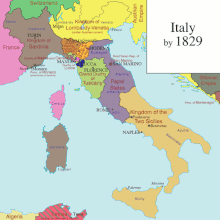
The Risorgimento was the political and social process that unified different states of the Italian peninsula into the single nation of Italy.
It is difficult to pin down exact dates for the beginning and end of Italian reunification, but most scholars agree that it began with the end of Napoleonic rule and the Congress of Vienna in 1815, and approximately ended with the Franco-Prussian War in 1871, though the last "città irredente" did not join the Kingdom of Italy until the Italian victory in World War I.
As Napoleon's reign began to fail, other national monarchs he had installed tried to keep their thrones by feeding those nationalistic sentiments, setting the stage for the revolutions to come. Among these monarchs were the viceroy of Italy, Eugène de Beauharnais, who tried to get Austrian approval for his succession to the Kingdom of Italy, and Joachim Murat, who called for Italian patriots' help for the unification of Italy under his rule.[2] Following the defeat of Napoleonic France, the Congress of Vienna (1815) was convened to redraw the European continent. In Italy, the Congress restored the pre-Napoleonic patchwork of independent governments, either directly ruled or strongly influenced by the prevailing European powers, particularly Austria.


In 1820, Spaniards successfully revolted over disputes about their Constitution, which influenced the development of a similar movement in Italy. Inspired by the Spaniards (who, in 1812, had created their constitution), a regiment in the army of the Kingdom of Two Sicilies, commanded by Guglielmo Pepe, a Carbonaro (member of the secret republican organization),[5] mutinied, conquering the peninsular part of Two Sicilies. The king, Ferdinand I, agreed to enact a new constitution. The revolutionaries, though, failed to court popular support and fell to Austrian troops of the Holy Alliance. Ferdinand abolished the constitution and began systematically persecuting known revolutionaries. Many supporters of revolution in Sicily, including the scholar Michele Amari, were forced into exile during the decades that followed.[6]
The leader of the 1821 revolutionary movement in Piedmont was Santorre di Santarosa, who wanted to remove the Austrians and unify Italy under the House of Savoy. The Piedmont revolt started in Alessandria, where troops adopted the green, white, and red tricolore of the Cisalpine Republic. The king's regent, prince Charles Albert, acting while the king Charles Felix was away, approved a new constitution to appease the revolutionaries, but when the king returned he disavowed the constitution and requested assistance from the Holy Alliance. Di Santarosa's troops were defeated, and the would-be Piedmontese revolutionary fled to Paris.[7]
At the time, the struggle for Italian unification was perceived to be waged primarily against the Austrian Empire and the Habsburgs, since they directly controlled the predominantly Italian-speaking northeastern part of present-day Italy and were the single most powerful force against unification. The Austrian Empire vigorously repressed nationalist sentiment growing on the Italian peninsula, as well as in the other parts of Habsburg domains. Austrian Chancellor Franz Metternich, an influential diplomat at the Congress of Vienna, stated that the word Italy was nothing more than "a geographic expression."[8]
Artistic and literary sentiment also turned towards nationalism; and perhaps the most famous of proto-nationalist works was Alessandro Manzoni's I Promessi Sposi (The Betrothed). Some read this novel as a thinly veiled allegorical critique of Austrian rule. The novel was published in 1827 and extensively revised in the following years. The 1840 version of I Promessi Sposi used a standardized version of the Tuscan dialect, a conscious effort by the author to provide a language and force people to learn it.
Those in favour of unification also faced opposition from the Holy See, particularly after failed attempts to broker a confederation with the Papal States, which would have left the Papacy with some measure of autonomy over the region. The pope at the time, Pius IX, feared that giving up power in the region could mean the persecution of Italian Catholics.[9]
Even among those who wanted to see the peninsula unified into one country, different groups could not agree on what form a unified state would take. Vincenzo Gioberti, a Piedmontese priest, had suggested a confederation of Italian states under rulership of the Pope. His book, Of the Moral and Civil Primacy of the Italians, was published in 1843 and created a link between the Papacy and the Risorgimento. Many leading revolutionaries wanted a republic, but eventually it was a king and his chief minister who had the power to unite the Italian states as a monarchy.

One of the most influential revolutionary groups was the Carbonari (charcoal-burners), a secret organization formed in southern Italy early in the 19th century. Inspired by the principles of the French Revolution, its members were mainly drawn from the middle class and intellectuals. After the Congress of Vienna divided the Italian peninsula among the European powers, the Carbonari movement spread into the Papal States, the Kingdom of Sardinia, the Grand Duchy of Tuscany, the Duchy of Modena and the Kingdom of Lombardy–Venetia.
The revolutionaries were so feared that the reigning authorities passed an ordinance condemning to death anyone who attended a Carbonari meeting. The society, however, continued to exist and was at the root of many of the political disturbances in Italy from 1820 until after unification. The Carbonari condemned Napoleon III to death for failing to unite Italy, and the group almost succeeded in assassinating him in 1858. Many leaders of the unification movement were at one time members of this organization. (Note: Napoleon III, as a young man, fought on the side of the 'Carbonari'.)
In this context, in 1847, the first public performance of the song Il Canto degli Italiani, the Italian national anthem since 1946, took place.[10][11] Il Canto degli Italiani, written by Goffredo Mameli set to music by Michele Novaro, is also known as the Inno di Mameli, after the author of the lyrics, or Fratelli d'Italia, from its opening line.

Two prominent radical figures in the unification movement were Giuseppe Mazzini and Giuseppe Garibaldi. The more conservative constitutional monarchic figures included the Count of Cavour and Victor Emmanuel II, who would later become the first king of a united Italy.
Mazzini's activity in revolutionary movements caused him to be imprisoned soon after he joined. While in prison, he concluded that Italy could – and therefore should – be unified and formulated his program for establishing a free, independent, and republican nation with Rome as its capital. After Mazzini's release in 1831, he went to Marseille, where he organized a new political society called La Giovine Italia (Young Italy). The new society, whose motto was "God and the People," sought the unification of Italy.
The creation of the Kingdom of Italy was the result of concerted efforts by Italian nationalists and monarchists loyal to the House of Savoy to establish a united kingdom encompassing the entire Italian Peninsula.
The Kingdom of Sardinia industrialized from 1830 onward. A constitution, the Statuto Albertino was enacted in the year of revolutions, 1848, under liberal pressure. Under the same pressure, the First Italian War of Independence was declared on Austria. After initial success the war took a turn for the worse and the Kingdom of Sardinia lost.
Garibaldi, a native of Nice (then part of the Kingdom of Sardinia), participated in an uprising in Piedmont in 1834, was sentenced to death, and escaped to South America. He spent fourteen years there, taking part in several wars, and returned to Italy in 1848.
After the Revolutions of 1848, the apparent leader of the Italian unification movement was Italian nationalist Giuseppe Garibaldi. He was popular amongst southern Italians.[12] Garibaldi led the Italian republican drive for unification in southern Italy, but the northern Italian monarchy of the House of Savoy in the Kingdom of Piedmont-Sardinia whose government was led by Camillo Benso, Count of Cavour, also had the ambition of establishing a united Italian state. Although the kingdom had no physical connection to Rome (deemed the natural capital of Italy), the kingdom had successfully challenged Austria in the Second Italian War of Independence, liberating Lombardy–Venetia from Austrian rule. On the basis of the Plombières Agreement, the Kingdom of Sardinia ceded Savoy and Nice to France, an event that caused the Niçard exodus, that was the emigration of a quarter of the Niçard Italians to Italy.[13] The kingdom also had established important alliances which helped it improve the possibility of Italian unification, such as Britain and France in the Crimean War.
Giuseppe Garibaldi was elected in 1871 in Nice at the National Assembly where he tried to promote the annexation of his hometown to the newborn Italian unitary state, but he was prevented from speaking.[14] Because of this denial, between 1871 and 1872 there were riots in Nice, promoted by the Garibaldini and called "Niçard Vespers",[15] which demanded the annexation of the city and its area to Italy.[16] Fifteen Nice people who participated in the rebellion were tried and sentenced.[17]
Unifying multiple bureaucracies
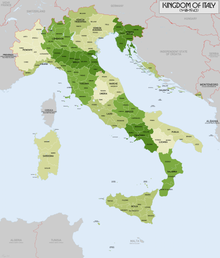
A major challenge for the prime ministers of the new Kingdom of Italy was integrating the political and administrative systems of the seven different major components into a unified set of policies. The different regions were proud of their historical patterns and could not easily be fitted into the Sardinian model. Cavour started planning but died before it was fully developed – indeed, the challenges of administration of various bureaucracies are thought to have hastened his death. The easiest challenge was to harmonize the administrative bureaucracies of Italy's regions. They practically all followed the Napoleonic precedent, so harmonization was straightforward. The second challenge was to develop a parliamentary system. Cavour and most liberals up and down the peninsula highly admired the British system, so it became the model for Italy to this day. Harmonizing the Army and Navy was much more complex, chiefly because the systems of recruiting soldiers and selecting and promoting officers were so different and needed to be grandfathered over decades. The disorganization helps explain why the Italian naval performance in the 1866 war was so abysmal. The military system was slowly integrated over several decades. Uniforming the several diverse education systems proved complicated as well. Shortly before his death, Cavour appointed Francesco De Sanctis as minister of education. De Sanctis was an eminent scholar from the University of Naples who proved an able and patient administrator. The addition of Veneto in 1866 and Rome in 1870 further complicated the challenges of bureaucratic coordination.[18]
Southern question and Italian diaspora

The transition was not smooth for the south (the "Mezzogiorno"). The path to unification and modernization created a divide between Northern and Southern Italy. People condemned the South for being "backwards" and barbaric, when in truth, compared to Northern Italy, "where there was backwardness, the lag, never excessive, was always more or less compensated by other elements".[19] Of course, there had to be some basis for singling out the South like Italy did. The entire region south of Naples was afflicted with numerous deep economic and social liabilities.[20] However, many of the South's political problems and its reputation of being "passive" or lazy (politically speaking) was due to the new government (that was born out of Italy's want for development) that alienated the South and prevented the people of the South from any say in important matters. However, on the other hand, transportation was difficult, soil fertility was low with extensive erosion, deforestation was severe, many businesses could stay open only because of high protective tariffs, large estates were often poorly managed, most peasants had only very small plots, and there was chronic unemployment and high crime rates.[21]


Cavour decided the basic problem was poor government, and believed that could be remedied by strict application of the Piedmonese legal system. The main result was an upsurge in brigandage, which turned into a bloody civil war that lasted almost ten years. The insurrection reached its peak mainly in Basilicata and northern Apulia, headed by the brigands Carmine Crocco and Michele Caruso.[22] With the end of the southern riots, there was a heavy outflow of millions of peasants in the Italian diaspora, especially to the United States and South America. Others relocated to the northern industrial cities such as Genoa, Milan and Turin, and sent money home.[21]
The first Italian diaspora began around 1880, two decades after the Unification of Italy, and ended in the 1920s to the early 1940s with the rise of Fascist Italy.[23] Poverty was the main reason for emigration, specifically the lack of land as mezzadria sharecropping flourished in Italy, especially in the South, and property became subdivided over generations. Especially in Southern Italy, conditions were harsh.[23] Until the 1860s to 1950s, most of Italy was a rural society with many small towns and cities and almost no modern industry in which land management practices, especially in the South and the Northeast, did not easily convince farmers to stay on the land and to work the soil.[24]
Another factor was related to the overpopulation of Southern Italy as a result of the improvements in socioeconomic conditions after Unification.[25] That created a demographic boom and forced the new generations to emigrate en masse in the late 19th century and the early 20th century, mostly to the Americas.[26] The new migration of capital created millions of unskilled jobs around the world and was responsible for the simultaneous mass migration of Italians searching for "work and bread" (Italian: pane e lavoro, pronounced [ˈpaːne e llaˈvoːro]).[27]

The Unification of Italy broke down the feudal land system, which had survived in the south since the Middle Ages, especially where land had been the inalienable property of aristocrats, religious bodies or the king. The breakdown of feudalism, however, and redistribution of land did not necessarily lead to small farmers in the south winding up with land of their own or land they could work and make profit from. Many remained landless, and plots grew smaller and smaller and so less and less productive, as land was subdivided amongst heirs.[24]
Between 1860 and World War I, 9 million Italians left permanently of a total of 16 million who emigrated, most travelling to North or South America.[28] The numbers may have even been higher; 14 million from 1876 to 1914, according to another study. Annual emigration averaged almost 220,000 in the period 1876 to 1900, and almost 650,000 from 1901 through 1915. Prior to 1900 the majority of Italian immigrants were from northern and central Italy. Two-thirds of the migrants who left Italy between 1870 and 1914 were men with traditional skills. Peasants were half of all migrants before 1896.[26]
The bond of the emigrants with their mother country continued to be very strong even after their departure. Many Italian emigrants made donations to the construction of the Altare della Patria (1885–1935), a part of the monument dedicated to King Victor Emmanuel II of Italy, and in memory of that, the inscription of the plaque on the two burning braziers perpetually at the Altare della Patria next to the tomb of the Italian Unknown Soldier, reads "Gli italiani all'estero alla Madre Patria" ("Italians abroad to the Motherland").[29] The allegorical meaning of the flames that burn perpetually is linked to their symbolism, which is centuries old, since it has its origins in classical antiquity, especially in the cult of the dead.[30] A fire that burns eternally symbolizes that the memory, in this case of the sacrifice of the Unknown Soldier and the bond of the country of origin, is perpetually alive in Italians, even in those who are far from their country, and will never fade.[30]
Liberal era (1861–1922)
Italy became a nation-state belatedly on 17 March 1861, when most of the states of the peninsula were united under king Victor Emmanuel II of the House of Savoy, which ruled over Piedmont. The architects of Italian unification were Camillo Benso, Count of Cavour, the Chief Minister of Victor Emmanuel, and Giuseppe Garibaldi, a general and national hero. In 1866, Prussian Prime Minister Otto von Bismarck offered Victor Emmanuel II an alliance with the Kingdom of Prussia in the Austro-Prussian War. In exchange Prussia would allow Italy to annex Austrian-controlled Venice. King Emmanuel agreed to the alliance and the Third Italian War of Independence began. The victory against Austria allowed Italy to annex Venice. The one major obstacle to Italian unity remained Rome.
In 1870, France started the Franco-Prussian War and brought home its soldiers in Rome, where they had kept the pope in power. Italy marched in to take over the Papal State. Italian unification was completed, and the capital was moved from Florence to Rome.[31]
Some of the states that had been targeted for unification (terre irredente), Trentino-Alto Adige and Julian March, did not join the Kingdom of Italy until 1918 after Italy defeated Austria-Hungary in the First World War. For this reason, historians sometimes describe the unification period as continuing past 1871, including activities during the late 19th century and the First World War (1915–1918), and reaching completion only with the Armistice of Villa Giusti on 4 November 1918. This more expansive definition of the unification period is the one presented at the Central Museum of the Risorgimento at the Altare della Patria in Rome.[32][33]

In Northern Italy, industrialisation and modernisation began in the last part of the 19th century. The south, at the same time, was overpopulated, forcing millions of people to search for a better life abroad. It is estimated that around one million Italian people moved to other European countries such as France, Switzerland, Germany, Belgium and Luxembourg, and to the Americas.
Parliamentary democracy developed considerably in the 19th century. The Sardinian Statuto Albertino of 1848, extended to the whole Kingdom of Italy in 1861, provided for basic freedoms, but the electoral laws excluded the non-propertied and uneducated classes from voting.
Italy's political arena was sharply divided between broad camps of left and right which created frequent deadlock and attempts to preserve governments, which led to instances such as conservative Prime Minister Marco Minghetti enacting economic reforms to appease the opposition such as the nationalization of railways. In 1876, Minghetti lost power and was replaced by the Democrat Agostino Depretis, who began a period of political dominance in the 1880s, but continued attempts to appease the opposition to hold power.
Agostino Depretis

Depretis began his term as Prime Minister by initiating an experimental political idea called Trasformismo (transformism). The theory of Trasformismo was that a cabinet should select a variety of moderates and capable politicians from a non-partisan perspective. In practice, trasformismo was authoritarian and corrupt, Depretis pressured districts to vote for his candidates if they wished to gain favourable concessions from Depretis when in power. The results of the 1876 election resulted in only four representatives from the right being elected, allowing the government to be dominated by Depretis. Despotic and corrupt actions are believed to be the key means in which Depretis managed to keep support in southern Italy. Depretis put through authoritarian measures, such as banning public meetings, placing "dangerous" individuals in internal exile on remote penal islands across Italy, and adopting militarist policies. Depretis enacted controversial legislation for the time, such as abolishing arrest for debt, making elementary education free and compulsory while ending compulsory religious teaching in elementary schools.[34]
The first government of Depretis collapsed after his dismissal of his Interior Minister, and ended with his resignation in 1877. The second government of Depretis started in 1881. Depretis' goals included widening suffrage in 1882 and increasing the tax intake from Italians by expanding the minimum requirements of who could pay taxes and the creation of a new electoral system called which resulted in large numbers of inexperienced deputies in the Italian parliament.[35] In 1887, Depretis was finally pushed out of office after years of political decline.
Francesco Crispi

Francesco Crispi (1818–1901) was Prime Minister for a total of six years, from 1887 until 1891 and again from 1893 until 1896. Historian R.J.B. Bosworth says of his foreign policy that Crispi:
Pursued policies whose openly aggressive character would not be equaled until the days of the Fascist regime. Crispi increased military expenditure, talked cheerfully of a European conflagration, and alarmed his German or British friends with his suggestions of preventative attacks on his enemies. His policies were ruinous, both for Italy's trade with France, and, more humiliatingly, for colonial ambitions in East Africa. Crispi's lust for territory there was thwarted when on 1 March 1896, the armies of Ethiopian Emperor Menelik routed Italian forces at Adowa, ... In what has been defined as an unparalleled disaster for a modern army. Crispi, whose private life (he was perhaps a trigamist) and personal finances...were objects of perennial scandal, went into dishonorable retirement.[36]

Crispi had been in the Depretis cabinet minister and was once a Garibaldi republican. Crispi's major concerns before during 1887–91 was protecting Italy from Austria-Hungary. Crispi worked to build Italy as a great world power through increased military expenditures, advocation of expansionism, and trying to win Germany's favor even by joining the Triple Alliance which included both Germany and Austria-Hungary in 1882 which remained officially intact until 1915. While helping Italy develop strategically, he continued trasformismo and was authoritarian, once suggesting the use of martial law to ban opposition parties. Despite being authoritarian, Crispi put through liberal policies such as the Public Health Act of 1888 and establishing tribunals for redress against abuses by the government.[37]
The overwhelming attention paid to foreign policy alienated the agricultural community which needed help. Both radical and conservative forces in the Italian parliament demanded that the government investigate how to improve agriculture in Italy.[38] The investigation which started in 1877 and was released eight years later, showed that agriculture was not improving, that landowners were swallowing up revenue from their lands and contributing almost nothing to the development of the land. There was aggravation by lower class Italians to the break-up of communal lands which benefited only landlords. Most of the workers on the agricultural lands were not peasants but short-term labourers who at best were employed for one year. Peasants without stable income were forced to live off meager food supplies, disease was spreading rapidly, plagues were reported, including a major cholera epidemic which killed at least 55,000 people.[39]
The Italian government could not deal with the situation effectively due to the mass overspending of the Depretis government that left Italy in huge debt. Italy also suffered economically because of overproduction of grapes for their vineyards in the 1870s and 1880s when France's vineyard industry was suffering from vine disease caused by insects. Italy during that time prospered as the largest exporter of wine in Europe but following the recovery of France in 1888, southern Italy was overproducing and had to split in two which caused greater unemployment and bankruptcies.[40]
Early colonialism
In the late 19th and early 20th century, Italy attempted to join the Great Powers in acquiring colonies, though it found this difficult due to resistance and unprofitable due to heavy military costs and the lesser economic value of spheres of influence remaining when Italy began to colonize.
A number of colonial projects were undertaken by the government. These were done to gain support of Italian nationalists and imperialists, who wanted to rebuild a Roman Empire. Already, there were large Italian communities in Alexandria, Cairo, and Tunis. Italy first attempted to gain colonies by entering a variety of failed negotiations with other world powers to make colonial concessions. Another approach by Italy was to investigate uncolonized, undeveloped lands by sending missionaries to them. The most promising and realistic lands for colonization were parts of Africa. Italian missionaries had already established a foothold at Massawa in the 1830s and had entered deep into Ethiopia.[41]
During the construction of the Suez Canal in Egypt by Britain and France in the 1850s, Cavour believed that this presented an opportunity for Italian access to the East and had wanted the Italian merchant marine to take advantage of the Suez Canal's creation. Following Cavour's initiative, a man named Sapeto was given permission by the Rubattino shipping company to use a ship to establish a station in east Africa as a means of creating a route to the east. Sapeto landed at the Bay of Assab, a part of modern-day Eritrea in 1869. One year later, the land was purchased from the local Sultan by the Rubattino shipping company acting on the behalf of the Italian government. In 1882, Assab officially became an Italian territory, making it Italy's first colony. Though Tunisia would have been a preferable target because of its close proximity to Italy, the threat of reaction by the French made the attempt too dangerous to pursue. Italy could not afford the threat of war, as its industry was not developed. Assab stood as the start of the small colonial adventures that Italy would initially undertake.[42]

On 5 February 1885, taking advantage of Egypt's conflict with Britain, Italian soldiers landed at Massawa in present-day Eritrea, shortly after the fall of Egyptian rule in Khartoum. As was key in Italian foreign policy, the British backed Italy's taking of Massawa from the Egyptians as it aided their occupation efforts.[43] In 1888, Italy annexed Massawa by force, allowing it to pursue its creation of the colony of Italian Eritrea.
In 1885, Italy offered Britain military support for the occupation of Egyptian Sudan, but the British decided that they did not need Italian support to crush the remainder of Egypt, as the forces of Sudanese Muslim rebel Muhammad Ahmad, called the Mahdist army in Sudan, already had crushed remaining Egyptian forces, and Ethiopia's (then called Abyssinia) intervention in Sudan also aided the British.[44] Italy's earlier intervention in Assab set off tensions with Ethiopia, which had territorial aims on Assab, and Italy's official annexation of Ethiopian-claimed Massawa in 1888 increased tensions further.
In 1889, Ethiopia's Emperor Yohannes IV died in battle in Sudan, Menelik II replaced Yohannes as Emperor. Menelik believed he could negotiate with Italy to avoid war and in error allowed Italy's claim to Massawa. Menelik made another serious blunder when he signed an agreement which declared that Ethiopia would work alongside the King of Italy in its dealings with foreign powers, which the Italians interpreted to declare that Ethiopia had in effect made itself a protectorate of Italy.[45] Menelik opposed the Italian interpretation and the differences between the two states grew.
In October 1889, Menelik met with a Russian officer who was sent to discuss merging the Russian and Abyssinian orthodox churches, but Menelik was more concerned over Italy's massing army in Eritrea.[45] The meeting was used by Menelik to show unity between Ethiopia and Russia against Italian interests in the area.[45]
Russia's own interests in East Africa led Russia's government to send large amounts of modern weaponry to the Ethiopians to hold back an Italian invasion. In response, Britain decided to back the Italians to challenge Russian influence in Africa and declared that all of Ethiopia was within the sphere of Italian interest. On the verge of war, Italian militarism and nationalism reached a peak, with Italians flocking to the Italian army, hoping to take part in the upcoming war.[46]
In 1895, Ethiopia abandoned its agreement to follow Italian foreign policy, and Italy used the renunciation as a reason to invade Ethiopia, with the support of the United Kingdom.[47] The Italian and British army failed on the battlefield of Adowa, as the Ethiopians were numerical superior and supported by Russia and France with modern weapons; the sheer large numbers of the Ethiopian warriors forced Italy eventually to retreat into Eritrea.[48] Ethiopia would remain independent from Italy and other colonial powers until it was occupied in 1936 but then subsequently liberated after World War II.
Giovanni Giolitti

In 1892, Giovanni Giolitti became Prime Minister of Italy for his first term. Though his first government quickly collapsed a year later, Giolitti returned in 1903 to lead Italy's government during a fragmented reign that lasted until 1914. Giolitti had spent his earlier life as a civil servant, and then took positions within the cabinets of Crispi. Giolitti was the first long-term Italian Prime Minister in many years and was so because he mastered the political concept of trasformismo by manipulating, coercing and bribing officials to his side. In elections during Giolitti's government, voting fraud was common, and Giolitti helped improve voting only in well-off, more supportive areas, while attempting to isolate and intimidate poor areas where opposition was strong.[49]
On May 5, 1898, workers in Milan organized a strike to demonstrate against the government of Antonio Starrabba di Rudinì, holding it responsible for the general increase of prices and for the famine that was affecting the country. In response infantry, cavalry and artillery were brought into the city and General Fiorenzo Bava Beccaris ordered his troops to fire on demonstrators. According to the government, there were 118 dead and 450 wounded. King Umberto I praised the General and awarded him the medal of Grande Ufficiale dell'Ordine Militare dei Savoia. The decoration exacerbated the Italian population's indignation. On the other hand, Antonio di Rudinì was forced to resign in July 1898.
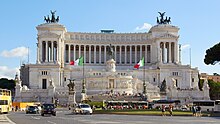
On 29 July 1900, at Monza, Umberto I was assassinated by the anarchist Gaetano Bresci who claimed he had come directly from America to avenge the victims of the repression, and the offense given by the decoration awarded to General Bava Beccaris.
Southern Italy was in terrible shape prior to and during Giolitti's tenure as Prime Minister. Four-fifths of southern Italians were illiterate and the dire situation there ranged from problems of large numbers of absentee landlords to rebellion and even starvation.[50] Corruption was such a large problem that Giolitti himself admitted that there were places "where the law does not operate at all".[51] Natural disasters like earthquakes and landslides were a common source of destruction in southern Italy, often killing hundreds of people in each disaster, and southern Italy's poverty made repair work very difficult to do. Giolitti's small response to the major earthquake in Messina in 1908 was blamed for the high number of deaths which numbered at 50,000 people. The Messina earthquake infuriated southern Italians who claimed that Giolitti favoured the rich north over them. One study released in 1910 examined tax rates in north, central and southern Italy indicated that northern Italy with 48% of the nation's wealth paid 40% of the nation's taxes, while the south with 27% of the nation's wealth paid 32% of the nation's taxes.[52]
Political upheavals

Politics were in turmoil. The expansion of the electorate from 3 million to 8.5 million voters in 1912 brought in many workers and peasants, with gains for the Socialist and Catholic forces. New interest groups became better organized, with local organizations and influential newspapers, such as the Catholics, the nationalists, the farmers and the sugar growers. Giolitti lost his once-powerful hold on the press. During Giolitti's three-year absence, the Italian liberal establishment weakened with the rise of Italian nationalism. The nationalists were becoming a popular movement with popular leadership figures such as Enrico Corradini and the revolutionary Gabriele D'Annunzio. Nationalists began demanding the return of Italian-populated territories in Austria, demanded Croatian-populated Dalmatia, spoke of the need for Italy to expand territorially into Africa, particularly Libya. Giolitti negotiated with the nationalists demands and began planning an invasion of Ottoman Turkish-held Libya.[53]
The Italian Catholic Electoral Union (Unione elettorale cattolica italiana) was formed in 1905 to coordinate Catholic voters. It was formed in 1905 after the suppression of the Opera dei Congressi following the encyclical Il fermo proposito of Pope Pius X. The Union was headed in 1909–16 by Count Ottorino Gentiloni. The Gentiloni pact of 1913 brought many new Catholic voters into politics, where they supported the Liberal party of Prime Minister Giovanni Giolitti. By the terms of the pact, the Union directed Catholic voters to Giolitti supporters who agreed to favor the Church's position on such key issues as funding private Catholic schools, and blocking a law allowing divorce.[54]
However the Socialists divided over Italy's conquest of Libya in 1911–12. Meanwhile, the nationalists grew in power. The Gentiloni pact brought new Catholic support to the Liberals, who were thus moving to more conservative positions. Increasingly the Radicals and Socialists on the Left rejected Giolitti, especially his pro-Catholic policies. In October 1913 he formed a new government with the clericals. Giolitti stepped down and the new government was headed by Antonio Salandra, a right-wing conservative.[55]
Until 1922, Italy was a constitutional monarchy with a parliament; in 1913, the first universal male suffrage election was held. The so-called Statuto Albertino, which Carlo Alberto conceded in 1848 remained unchanged, even if the kings usually abstained from abusing their extremely large powers (for example, senators were not elected but chosen by the king).
Colonial empire

In 1911, Giolitti's government agreed to sending forces to occupy Libya. Italy declared war on the Ottoman Empire which held Libya as a colony. The war ended only a year later, but the occupation resulted in acts of extreme discrimination towards Libyans such as the forced deportation of Libyans to the Tremiti Islands in October 1911 and by 1912, a third of these Libyan refugees had died due to lack of food supplies and shelter from the Italian occupation forces.[56] Italian control of the area was weak, leading to twenty years of conflict with the Senussi religious order which was the main political and religious authority in the Libyan hinterlands. The invasion of Libya did mark a turn in direction for the opposition to the Italian government, revolutionaries became divided, some adopting nationalist lines, while others retaining socialist lines.[57] The annexation of Libya caused nationalists to advocate Italy's domination of the Mediterranean Sea by occupying Greece as well as the Adriatic coastal region of Dalmatia.[57]

While the success of the Libyan War improved the status of the nationalists, it did not help Giolitti's administration as a whole. The war radicalized the Italian Socialist Party with anti-war revolutionaries led by future-Fascist dictator Benito Mussolini calling for violence to bring down the government. Giolitti could no longer rely on the dwindling reformist socialist elements and was forced to concede even further to the right, Giolitti dropped all anticlericalism and reached out to clericals which alienated his moderate liberal base leaving him with an unsteady coalition which collapsed in 1914. By the end of his tenure, Italians detested him and the liberal establishment for the fraudulent elections, the divided society, and the failure and corruption of trasformiso organized governments. Giolitti would return as Prime Minister only briefly in 1920, but the era of liberalism was effectively over in Italy.
Italian colonial ventures began with the acquisition of the ports of Asseb in 1869 and Massawa in 1885 in what is now Eritrea. These areas were claimed by Ethiopia at the time, and when Ethiopia went into turmoil at the death of Emperor Yohannes IV Italy moved into the northern Ethiopian highlands. However, further expansion was checked by a revival of Ethiopian power under Emperor Menelik II which led to the defeat of Italian forces at the battle of Adua. However, Italy was still able to secure the northern highlands in the Treaty of Wuchale, ending its conflict with Ethiopia until 1935.
Around the same time Italy began to colonize Somalia. It avoided the other powers carving out domains in that area but gradually gained the southern Somali coast beginning with the Sultanate of Hobyo and the Sultanate of Majeerteen in 1888 and continuing with gradual acquisitions until 1925 when Chisimayu Region belonging to the British protectorate of Zanzibar was given to Italy.
World War I
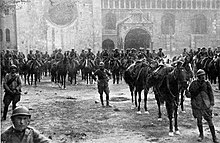
Italy entered into the First World War in 1915 with the aim of completing national unity: for this reason, the Italian intervention in the First World War is also considered the Fourth Italian War of Independence,[62] in a historiographical perspective that identifies in the latter the conclusion of the unification of Italy, whose military actions began during the revolutions of 1848 with the First Italian War of Independence.[63][64]
The First World War (1914–1918) was an unexpected development that forced the decision whether to honor the alliance with Germany and Austria. For six months Italy remained neutral, as the Triple Alliance was only for defensive purposes. Italy took the initiative in entering the war in spring 1915, despite strong popular and elite sentiment in favor of neutrality. Italy was a large, poor country whose political system was chaotic, its finances were heavily strained, and its army was very poorly prepared.[65] The Triple Alliance meant little either to Italians or Austrians – Vienna had declared war on Serbia without consulting Rome. Two men, Prime Minister Antonio Salandra and Foreign Minister Sidney Sonnino made all the decisions, as was typical in Italian foreign policy. They operated in secret, enlisting the king later on, but keeping military and political leaders entirely in the dark. They negotiated with both sides for the best deal, and got one from the Entente, which was quite willing to promise large slices of the Austro-Hungarian Empire, including the Tyrol and Trieste, as well as making Albania a protectorate. Russia vetoed giving Italy Dalmatia. Britain was willing to pay subsidies and loans to get 36 million Italians as new allies who threatened the southern flank of Austria.[66]

When the Treaty of London was announced in May 1915, there was an uproar from antiwar elements. Salandra resigned but no one could form a majority against him, and he returned to office. Most politicians, and indeed most Italians opposed the war, including most Catholics. Reports from around Italy showed the people feared war, and cared little about territorial gains. Rural folk saw war is a disaster, like drought, famine or plague. Businessmen were generally opposed, fearing heavy-handed government controls and taxes, and loss of foreign markets. Reversing the decision seemed impossible, for the Triple Alliance did not want Italy back, and the king's throne was at risk. Pro-war supporters mobbed the streets with tens of thousands of shouting by nationalists, Futurists, anti-clericals, and angry young men. Benito Mussolini, an important Socialist Party editor took a leadership role, but he was expelled from the Party and only a minority followed him. Apart from Russia this was the only far left party in Europe that opposed the war. The fervor for war represented a bitterly hostile reaction against politics as usual, and the failures, frustrations, and stupidities of the ruling class.[67][68]
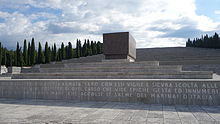
Italy entered the war with an army of 875,000 men, but the army was poorly led and lacked heavy artillery and machine guns, their war supplies having been largely depleted in the war of 1911–12 against Turkey.
Italy proved unable to prosecute the war effectively, as fighting raged for three years on a very narrow front along the Isonzo River, where the Austrians held the high ground. In 1916, Italy declared war on Germany, which provided significant aid to the Austrians. Some 650,000 Italian soldiers died and 950,000 were wounded, while the economy required large-scale Allied funding to survive.[71][72]
Before the war the government had ignored labor issues, but now it had to intervene to mobilize war production. With the main working-class Socialist party reluctant to support the war effort, strikes were frequent and cooperation was minimal, especially in the Socialist strongholds of Piedmont and Lombardy. The government imposed high wage scales, as well as collective bargaining and insurance schemes.[73]
Many large firms expanded dramatically. The workforce at Ansaldo grew from 6,000 to 110,000 as it manufactures 10,900 artillery pieces, 3,800 warplanes, 95 warships and 10 million artillery shells. At Fiat the workforce grew from 4,000 to 40,000. Inflation doubled the cost of living. Industrial wages kept pace but not wages for farm workers. Discontent was high in rural areas since so many men were taken for service, industrial jobs were unavailable, wages grew slowly and inflation was just as bad.[74]
The Italian victory,[75][76][77] which was announced by the Bollettino della Vittoria and the Bollettino della Vittoria Navale, marked the end of the war on the Italian Front, secured the dissolution of the Austro-Hungarian Empire and was chiefly instrumental in ending the First World War less than two weeks later. More than 651,000 Italian soldiers died on the battlefields of World War I.[78] The Italian civilian deaths, estimated on the basis of pre-war demographic statistics, were estimated at 589,000 due to malnutrition and food shortages.[79]
As the war came to an end, Italian Prime Minister Vittorio Emanuele Orlando met with British Prime Minister David Lloyd George, Prime Minister of France Georges Clemenceau and United States President Woodrow Wilson in Versailles to discuss how the borders of Europe should be redefined to help avoid a future European war.
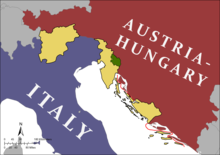
The talks provided little territorial gain to Italy because, during the peace talks, Wilson promised freedom to all European nationalities to form their nation-states. As a result, the Treaty of Versailles did not assign Dalmatia and Albania to Italy as had been promised in the Treaty of London. Furthermore, the British and French decided to divide the German overseas colonies into their mandates, with Italy receiving none of them. Italy also gained no territory from the breakup of the Ottoman Empire, despite a proposal being issued to Italy by the United Kingdom and France during the war, only to see these nations carve up the Ottoman Empire between themselves (also exploiting the forces of the Arab Revolt). Despite this, Orlando agreed to sign the Treaty of Versailles, which caused uproar against his government. The Treaty of Saint-Germain-en-Laye (1919) and the Treaty of Rapallo (1920) allowed the annexation of Trentino Alto-Adige, Julian March, Istria, Kvarner as well as the Dalmatian city of Zara.

Furious over the peace settlement, the Italian nationalist poet Gabriele D'Annunzio led disaffected war veterans and nationalists to form the Free State of Fiume in September 1919. His popularity among nationalists led him to be called Il Duce ("The Leader"), and he used black-shirted paramilitary in his assault on Fiume. The leadership title of Duce and the blackshirt paramilitary uniform would later be adopted by the Fascist movement of Benito Mussolini. The demand for the Italian annexation of Fiume spread to all sides of the political spectrum, including Mussolini's Fascists.[80] D'Annunzio's stirring speeches drew Croat nationalists to his side and also kept contact with the Irish Republican Army and Egyptian nationalists.[81]
The subsequent Treaty of Rome (1924) led to the annexation of the city of Fiume to Italy. Italy did not receive other territories promised by the Treaty of London (1915), such as Dalmatia, so this outcome was denounced as a mutilated victory. The rhetoric of mutilated victory was adopted by Benito Mussolini and led to the rise of Italian fascism, becoming a key point in the propaganda of Fascist Italy. Historians regard mutilated victory as a "political myth", used by fascists to fuel Italian imperialism and obscure the successes of liberal Italy in the aftermath of World War I.[82] Italy also gained a permanent seat in the League of Nations's executive council.
Fascist regime, World War II, and Civil War (1922–1946)
Rise of Fascism into power
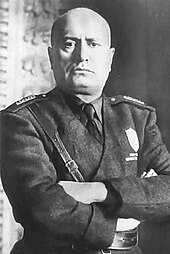
In 1914, Benito Mussolini was forced out of the Italian Socialist Party after calling for Italian intervention in the war against Austria-Hungary. Before World War I, Mussolini had opposed military conscription, protested against Italy's occupation of Libya and was the editor of the Socialist Party's official newspaper, Avanti!, but over time he simply called for revolution without mentioning class struggle.[83] In 1914, Mussolini's nationalism enabled him to raise funds from Ansaldo (an armaments firm) and other companies to create his newspaper, Il Popolo d'Italia, which at first attempted to convince socialists and revolutionaries to support the war.[84] The Allied Powers, eager to draw Italy to the war, helped finance the newspaper.[85] Later, after the war, this publication would become the official newspaper of the Fascist movement. During the war, Mussolini served in the Army and was wounded once.[86]
Following the end of the war and the Treaty of Versailles in 1919, Mussolini created the Fasci di Combattimento or Combat League. It was originally dominated by patriotic socialist and syndicalist veterans who opposed the pacifist policies of the Italian Socialist Party. This early Fascist movement had a platform more inclined to the left, promising social revolution, proportional representation in elections, women's suffrage (partly realized in 1925) and dividing rural private property held by estates.[87][88] They also differed from later Fascism by opposing censorship, militarism and dictatorship.[89] Mussolini claimed that "we are libertarians above all, loving liberty for everyone, even for our enemies" and said that freedom of thought and speech were among the "highest expressions of human civilization."[90] On 15 April 1919, the Fascists made their debut in political violence when a group of members from the Fasci di Combattimento attacked the offices of Avanti!.

At the same time, the so-called Biennio Rosso (red biennium) took place in the two years following the first world war in a context of economic crisis, high unemployment and political instability. The 1919–20 period was characterized by mass strikes, worker manifestations as well as self-management experiments through land and factory occupations. In Turin and Milan, workers councils were formed and many factory occupations took place under the leadership of anarcho-syndicalists. The agitations also extended to the agricultural areas of the Padan plain and were accompanied by peasant strikes, rural unrests and guerilla conflicts between left-wing and right-wing militias.
Thenceforth, the Fasci di Combattimento (forerunner of the National Fascist Party, 1921) of Benito Mussolini successfully exploited the claims of Italian nationalists and the quest for order and normalization of the middle class. In 1920, old Prime Minister Giolitti was reappointed in a desperate attempt to solve Italy's deadlock, but his cabinet was weak and threatened by a growing socialist opposition. Giolitti believed that the Fascists could be toned down and used to protect the monarchy from the socialists. In the 1921 elections, the Fascists did not make large gains, but Giolitti's government failed to gather a large enough coalition to govern and offered the Fascists placements in his government. The Fascists rejected Giolitti's offers and joined with socialists in bringing down his government.[91]

In October 1922, Mussolini took advantage of a general strike to announce his demands to the Italian government to give the Fascist Party political power or face a coup. With no immediate response, a group of 30,000 Fascists began a long trek across Italy to Rome (the March on Rome), claiming that Fascists were intending to restore law and order. The Fascists demanded Prime Minister Luigi Facta's resignation and that Mussolini be named to the post.
Although the Italian Army was far better armed than the Fascist militias, the liberal system and King Victor Emmanuel III were facing a deeper political crisis. The King was forced to choose which of the two rival movements in Italy would form the government: Mussolini's Fascists, or the marxist Italian Socialist Party. He selected the Fascists.

Upon taking power, Mussolini formed a coalition with nationalists and liberals. In 1923, Mussolini's coalition passed the electoral Acerbo Law, which assigned two thirds of the seats to the party that achieved at least 25% of the vote. The Fascist Party used violence and intimidation to achieve the threshold in the 1924 election, thus obtaining control of Parliament. Socialist deputy Giacomo Matteotti was assassinated after calling for a nullification of the vote because of the irregularities.
Over the next four years, Mussolini eliminated nearly all checks and balances on his power. On 24 December 1925, he passed a law that declared he was responsible to the king alone, making him the sole person able to determine Parliament's agenda. Local governments were dissolved, and appointed officials (called "Podestà") replaced elected mayors and councils. In 1928, all political parties were banned, and parliamentary elections were replaced by plebiscites in which the Grand Council of Fascism nominated a single list of 400 candidates.
Christopher Duggan, using private diaries and letters, and secret police files, argues that Mussolini enjoyed a strong, wide base of popular support among ordinary people across Italy. Mussolini elicited emotional responses unique in modern Italian history, and kept his popularity despite the military reverses after 1940. Duggan argues that his regime exploited Mussolini's appeal and forged a cult of personality that served as the model that was emulated by dictators of other fascist regimes of the 1930s.[92]
In summary, historian Stanley G. Payne says that Fascism in Italy was:
- A primarily political dictatorship. The Fascist Party itself had become almost completely bureaucratized and subservient to, not dominant over, the state itself. Big business, industry, and finance retained extensive autonomy, particularly in the early years. The armed forces also enjoyed considerable autonomy. ... The Fascist militia was placed under military control. The judicial system was left largely intact and relatively autonomous as well. The police continued to be directed by state officials and were not taken over by party leaders, nor was a major new police elite created. There was never any question of bringing the Church under overall subservience. Sizable sectors of Italian cultural life retained extensive autonomy, and no major state propaganda-and-culture ministry existed. The Mussolini regime was neither especially sanguinary nor particularly repressive.[93]
Italianization of the non-Italian population


In the Julian March there was a forced policy of Italianization of the Slav population in the 1920s and 1930s.[94] In addition, there were acts of fascist violence not hampered by the authorities, such as the torching of the Narodni dom (National House) in Pola and Trieste carried out at night by Fascists with the connivance of the police (13 July 1920). The situation deteriorated further after Benito Mussolini came to power (1922). In March 1923 the prefect of the Julian March prohibited the use of Croatian and Slovene in the administration, whilst their use in law courts was forbidden by Royal decree on 15 October 1925.
The activities of Croatian and Slovenian societies and associations (Sokol, reading rooms, etc.) had already been forbidden during the occupation, but specifically so later with the Law on Associations (1925), the Law on Public Demonstrations (1926) and the Law on Public Order (1926). All Slovenian and Croatian societies and sporting and cultural associations had to cease every activity in line with a decision of provincial fascist secretaries dated 12 June 1927. On a specific order from the prefect of Trieste on 19 November 1928 the Edinost political society was also dissolved. Croatian and Slovenian co-operatives in Istria, which at first were absorbed by the Pula or Trieste Savings Banks, were gradually liquidated.[95]
At the same time, the Kingdom of Jugoslavia attempted a policy of forced Croatisation against the Italian minority in Dalmatia.[96] The majority of the Italian Dalmatian minority decided to transfer in the Kingdom of Italy.[97] During the Italian annexation of Dalmatia in World War II, it was caught in the ethnic violence towards non-Italians during fascist repression. What remained of the Italian community in Dalmatia fled the area after World War II during the Istrian–Dalmatian exodus:[98] from 1947, after the war, Dalmatian Italians were subject by Yugoslav authorities to forms of intimidation, such as nationalization, expropriation, and discriminatory taxation,[99] which gave them little option other than emigration.[100][101][102]
In 1919, at the time of its annexation, South Tyrol was inhabited by almost 90% German speakers.[103] In October 1923, the use of the Italian language became mandatory (although not exclusive) on all levels of federal, provincial and local government.[104] Regulations by the fascist authorities required that all kinds of signs and public notices be in Italian only. Maps, postcards and other graphic material had to show Italian place names.[104] In September 1925, Italian became the sole permissible language in courts of law.[104] The government created incentives to encourage immigration of native Italians to South Tyrol. Under the 1939 South Tyrol Option Agreement, Adolf Hitler and Benito Mussolini determined the status of the German people living in the province. They either had to opt for emigration to Germany or stay in Italy and become fully Italianized. Because of the outbreak of World War II, this agreement was never fully implemented and most ethnic Germans remained or returned at the end of the war.
End of the Roman question
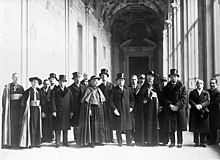
The Lateran Treaty was one component of the Lateran Pacts of 1929, agreements between the Kingdom of Italy under King Victor Emmanuel III of Italy and the Holy See under Pope Pius XI to settle the long-standing Roman Question. The treaty and associated pacts were named after the Lateran Palace where they were signed on 11 February 1929,[105] and the Italian parliament ratified them on 7 June 1929. The treaty recognized Vatican City as an independent state under the sovereignty of the Holy See. The Italian government also agreed to give the Roman Catholic Church financial compensation for the loss of the Papal States.[106] In 1948, the Lateran Treaty was recognized in the Constitution of Italy as regulating the relations between the state and the Catholic Church.[107] The treaty was significantly revised in 1984, ending the status of Catholicism as the sole state religion.
During the unification of Italy in the mid-19th century, the Papal States resisted incorporation into the new nation, even as all the other Italian countries, except for San Marino, joined it; Camillo Cavour's dream of proclaiming the Kingdom of Italy from the steps of St. Peter's Basilica did not come to pass. The nascent Kingdom of Italy invaded and occupied Romagna (the eastern portion of the Papal States) in 1860, leaving only Latium in the pope's domains. Latium, including Rome itself, was occupied and annexed in 1870. For the following sixty years, relations between the Papacy and the Italian government were hostile, and the status of the pope became known as the "Roman Question".
Foreign politics
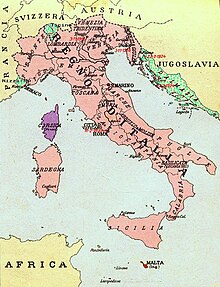
Lee identifies three major themes in Mussolini's foreign-policy. The first was a continuation of the foreign-policy objectives of the preceding Liberal regime. Liberal Italy had allied itself with Germany and Austria, and had great ambitions in the Balkans and North Africa. Ever since it had been badly defeated in Ethiopia in 1896, there was a strong demand for seizing that country. Second was a profound disillusionment after the heavy losses of the First World War. The small territorial gains from Austria were not enough to compensate for the war's terrible costs; other countries especially Poland and Yugoslavia received much more and Italy felt cheated. Third was Mussolini's promise to restore the pride and glory of the old Roman Empire.[108]
Italian Fascism is based upon Italian nationalism and in particular seeks to complete what it considers as the incomplete project of Risorgimento by incorporating Italia Irredenta (unredeemed Italy) into the state of Italy.[109][110] To the east of Italy, the Fascists claimed that Dalmatia was a land of Italian culture whose Italians, including those of Italianized South Slavic descent, had been driven out of Dalmatia and into exile in Italy, and supported the return of Italians of Dalmatian heritage.[111] Mussolini identified Dalmatia as having strong Italian cultural roots for centuries, similarly to Istria, via the Roman Empire and the Republic of Venice.[112] To the south of Italy, the Fascists claimed Malta, which belonged to the United Kingdom, and Corfu, which instead belonged to Greece, to the north claimed Italian Switzerland, while to the west claimed Corsica, Nice and Savoy, which belonged to France.[113][114] The Fascist regime produced literature on Corsica that presented evidence of the island's italianità.[115] The Fascist regime produced literature on Nice that justified that Nice was an Italian land based on historic, ethnic and linguistic grounds.[115]
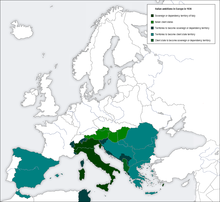
Legend:
Mussolini promised to bring Italy back as a great power in Europe, building a "New Roman Empire" and holding power over the Mediterranean Sea. In propaganda, Fascists used the ancient Roman motto "Mare Nostrum" (Latin for "Our Sea") to describe the Mediterranean. For this reason the Fascist regime engaged in interventionist foreign policy in Europe. In 1923, the Greek island of Corfu was briefly occupied by Italy, after the assassination of General Tellini in Greek territory. In 1925, Albania came under heavy Italian influence as a result of the Tirana Treaties, which also gave Italy a stronger position in the Balkans.[116] Relations with France were mixed. The Fascist regime planned to regain Italian-populated areas of France.[117] With the rise of Nazism, it became more concerned of the potential threat of Germany to Italy. Due to concerns of German expansionism, Italy joined the Stresa Front with France and the United Kingdom, which existed from 1935 to 1936. The Fascist regime held negative relations with Yugoslavia, as it continued to claim Dalmatia.
During the Spanish Civil War between the socialist Republicans and Nationalists led by Francisco Franco, Italy sent arms and over 60,000 troops to aid the Nationalist faction. This secured Italy's naval access to Spanish ports and increased Italian influence in the Mediterranean. The Italian Navy committed 91 warships and submarines and sank 72,800 tons of Republican and neutral shipping. In addition, the Nationalist Spanish Navy sank 48 Republican and 44 foreign merchant ships, for a total of 240,000 tons, and captured 202 Republican and 23 foreign merchant ships, for a total of 330,000 tons.[118]
During all the 1930s, Italy strongly pursued a policy of naval rearmament; by 1940, the Regia Marina was the fourth largest navy in the world.
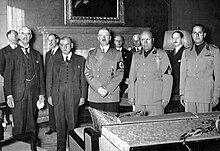
Mussolini and Adolf Hitler first met in June 1934, as the issue of Austrian independence was in crisis. Mussolini sought to ensure that Nazi Germany would not become hegemonic in Europe. To do this, he opposed German plans to annex Austria after the assassination of Austrian Chancellor Engelbert Dollfuss, and promised the Austrians military support if Germany were to interfere. Public appearances and propaganda constantly portrayed the closeness of Mussolini and Hitler and the similarities between Italian Fascism and German National Socialism. While both ideologies had significant similarities, the two factions were suspicious of each other, and both leaders were in competition for world influence.
In 1935 Mussolini decided to invade Ethiopia; 2,313 Italians and 275,000 Ethiopians died.[119] The Second Italo-Ethiopian War resulted in the international isolation of Italy, as France and Britain quickly abandoned their trust of Mussolini. The only nation to back Italy's aggression was Nazi Germany. After being condemned by the League of Nations, Italy decided to leave the League on 11 December 1937 and Mussolini denounced the League as a mere "tottering temple".[120] At this point, Mussolini had little choice but to join Hitler in international politics, thus he reluctantly abandoned its support of Austrian independence. Hitler proceeded with the Anschluss, the annexation of Austria, in 1938. Mussolini later supported German claims on Sudetenland, a province of Czechoslovakia inhabited mostly by Germans, at the Munich Conference. In 1938, under influence of Hitler, Mussolini supported the adoption of anti-semitic racial laws in Italy. After Germany annexed Czechoslovakia in March 1939, Mussolini decided to occupy Albania to because he feared being seen as a second-rate member of the Axis. On 7 April 1939, Italy invaded Albania and made it an Italian protectorate.
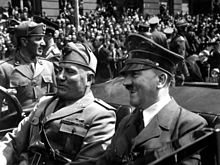
As war approached in 1939, the Fascist regime stepped up an aggressive press campaign against France claiming that Italian people were suffering in France.[121] This was important to the alliance as both regimes mutually had claims on France, Germany on German-populated Alsace-Lorraine and Italy on the mixed Italian and French populated Nice and Corsica. In May 1939, a formal alliance with Germany was signed, known as the Pact of Steel. Mussolini felt obliged to sign the pact in spite of his own concerns that Italy could not fight a war in the near future. This obligation grew from his promises to Italians that he would build an empire for them and from his personal desire to not allow Hitler to become the dominant leader in Europe.[122] Mussolini was repulsed by the Molotov–Ribbentrop Pact agreement where Germany and the Soviet Union agreed to partition the Second Polish Republic into German and Soviet zones for an impending invasion. The Fascist government saw this as a betrayal of the Anti-Comintern Pact, but decided to remain officially silent.[123]
Racial Laws
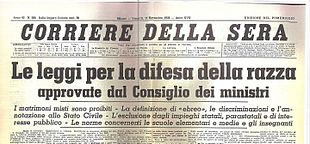
The Italian racial laws, otherwise referred to as the Racial Laws, were a series of laws which were promulgated by the Council of Ministers in Fascist Italy (1922–1943) from 1938 to 1943 in order to enforce racial discrimination and segregation in the Kingdom of Italy. The main victims of the Racial Laws were Italian Jews and the native African inhabitants of the Italian colonial empire (1923–1947).[124][125][126] In the aftermath of Mussolini's fall from power, the Badoglio government suppressed the Racial Laws in the Kingdom of Italy. They remained enforced and were made more severe in the territories ruled by the Italian Social Republic (1943–1945) until the end of the Second World War.[125]
The first and most important of the Racial Laws (Leggi Razziali) was the Regio Decreto 17 Novembre 1938, Nr. 1728. It restricted the civil rights of Italian Jews, banned books written by Jewish authors, and excluded Jews from public offices and higher education.[124] Additional laws stripped Jews of their assets, restricted travel, and finally, provided for their confinement in internal exile, as was done for political prisoners.[124] In recognition of both their past and future contributions and for their service as subjects of the Italian Empire, Rome passed a decree in 1937 distinguishing the Eritreans and Ethiopians from other subjects of the newly-founded colonial empire.[124][126] In the Kingdom of Italy, Eritreans and Ethiopians were to be addressed as "Africans" and not as natives, as was the case with the other African peoples subjected to the colonial rule of the Italian Empire.[126]
The promulgation of the Racial Laws was preceded by a long press campaign and publication of the "Manifesto of Race" earlier in 1938, a purportedly-scientific report signed by scientists and supporters of the National Fascist Party (PNF); among the 180 signers of the "Manifesto of Race" were two medical doctors (S. Visco and N. Fende), an anthropologist (L. Cipriani), a zoologist (E. Zavattari), and a statistician (F. Savorgnan).[127] The "Manifesto of Race", published in July 1938, declared the Italians to be descendants of the Aryan race.[124] It targeted races that were seen as inferior (i.e. not of Aryan descent). In particular, Jews were banned from many professions.[124] Under the Racial Laws, sexual relations and marriages between Italians, Jews, and Africans were forbidden.[124] Jews were banned from positions in banking, government, and education, as well as having their properties confiscated.[128][129]
The final decision about the Racial Laws was made during the meeting of the Gran Consiglio del Fascismo, which took place on the night between 6 and 7 of October 1938 in Rome, Palazzo Venezia. Not all Italian Fascists supported discrimination: while the pro-German, anti-Jewish Roberto Farinacci and Giovanni Preziosi strongly pushed for them, Italo Balbo strongly opposed the Racial Laws. The Racial Laws prohibited Jews from most professional positions as well as prohibited sexual relations and marriages between Italians, Jews, and Africans.[128] The press in Fascist Italy highly publicized the "Manifesto of Race", which included a mixture of biological racism and history; it declared that Italians belonged to the Aryan race, Jews were not Italians, and that it was necessary to distinguish between Europeans and non-Europeans.[130]
While some scholars argue that this was an attempt by Mussolini to curry favour with Adolf Hitler, who increasingly became an ally of Mussolini in the late 1930s and is speculated to have pressured him to increase the racial discrimination and persecution of Jews in the Kingdom of Italy,[131] others have argued that it reflected sentiments long entrenched not just in Fascist political philosophy but also in the teachings of the post-Tridentine Catholic Church, which remained a powerful cultural force in Mussolini's Fascist regime,[132] representing a uniquely Italian flavour of antisemitism[133] in which Jews were seen as an obstacle to the Fascist transformation of Italian society due to being bound to what Mussolini saw as decadent liberal democracies.[134]
Leading members of the National Fascist Party (PNF), such as Dino Grandi and Italo Balbo, reportedly opposed the Racial Laws,[135] and the laws were unpopular with most Italian citizens; the Jews were a small minority in Italy and had integrated deeply into Italian society and culture over the course of several centuries. Most Jews in Italy were either descendants of the ancient Italian Jews that practiced the Italian rite and had been living in the Italian Peninsula since Ancient Roman times; Western Sephardic Jews who had migrated to Italy from the Iberian Peninsula after the Reconquista and promulgation of the Alhambra Decree in the 1490s; and a smaller portion of Ashkenazi Jewish communities that settled in Northern Italy during the Middle Ages, which had largely assimilated into the established Italian-rite Jewish and Sephardic communities.
World War II and fall of Fascism
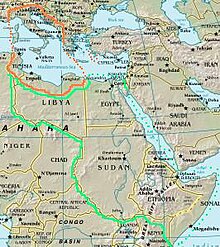
When Germany invaded Poland on 1 September 1939 beginning World War II, Mussolini chose to stay non-belligerent, although he declared his support for Hitler. In drawing out war plans, Mussolini and the Fascist regime decided that Italy would aim to annex large portions of Africa and the Middle East to be included in its colonial empire. Hesitance remained from the King and military commander Pietro Badoglio who warned Mussolini that Italy had too few tanks, armoured vehicles, and aircraft available to be able to carry out a long-term war and Badoglio told Mussolini "It is suicide" for Italy to get involved in the European conflict.[136] Mussolini and the Fascist regime took the advice to a degree and waited as France was invaded by Germany in June 1940 (Battle of France) before deciding to get involved.
As France's defeat was obviously inevitable, Italy entered the war on 10 June 1940, fulfilling its obligations towards the Pact of Steel. Mussolini hoped to quickly capture Savoy, Nice, Corsica, and the African colonies of Tunisia and Algeria from the French, but Germany signed an armistice (22 June: Second Armistice at Compiègne) with Marshal Philippe Pétain establishing Vichy France, that retained control over southern France and colonies. This decision angered the Fascist regime.[137] In summer 1940, Mussolini ordered the bombing of Mandatory Palestine and the conquest of British Somaliland. In September, he ordered the invasion of Egypt; despite initial success, Italian forces were soon driven back by the British (see Operation Compass). Hitler had to intervene with the sending of the Afrika Korps of General Erwin Rommel, that was the mainstay in the North African campaign. On 28 October, Mussolini launched an attack on Greece without consulting Hitler, who was informed of the invasion Greco-Italian War by reading about it in the morning newspaper and was furious. Mussolini tried to calm his ally by stating that he would be in Athens in two weeks time invasion of Greece. However, the Royal Air force prevented the Italian invasion and allowed the Greeks to push the Italians back to Albania.
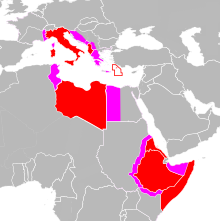
Hitler came to Mussolini's aid by attacking the Greeks through the Balkans. Balkans Campaign which had as result the dissolution of Yugoslavia and Greece's defeat. On that occasion, Italy gained south Slovenia, Dalmatia, Montenegro and established the puppet states of Croatia and Hellenic State. By 1942, it was faltering as its economy failed to adapt to the conditions of war and Italian cities were being heavily bombed by the Allies. Also, despite Rommel's advances, the campaign in North Africa began to fail in late 1942. The complete collapse came after the decisive defeat at El Alamein.
By 1943, Italy was losing on every front. By January of the same year, half of the Italian forces fighting in the Soviet Union had been destroyed,[138] the African campaign had failed, the Balkans remained unstable, and Italians wanted an end to the war.[139] In July 1943, the Allies invaded Sicily in an effort to knock Italy out of the war and establish a foothold in Europe. On 25 July, Mussolini was ousted by the Great Council of Fascism and arrested by order of King Victor Emmanuel III, who appointed General Pietro Badoglio as new Prime Minister. Badoglio stripped away the final elements of Fascist rule by banning the National Fascist Party, then signed an armistice with the Allied armed forces.
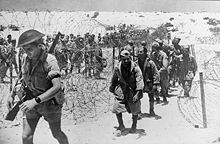
Donald Detwiler notes that "Italy's entrance into the war showed very early that her military strength was only a hollow shell. Italy's military failures against France, Greece, Yugoslavia and in the African Theatres of war shook Italy's new prestige mightily."[140] Historians have long debated why Italy's military and its Fascist regime were so remarkably ineffective at an activity – war – that was central to their identity. MacGregor Knox says the explanation, "was first and foremost a failure of Italy's military culture and military institutions."[141] Norman Polmar and Thomas B. Allen argue that "the Regia Aeronautica failed to perform effectively in modern conflict. Although the Italian Air Force had been in action in the conquest of Ethiopia and the Spanish Civil War, it was totally unprepared for combat...in June 1940. At the time Italy had about 2,500 military aircraft in service. Only 11,000 more were produced during the next three years, far fewer than any of the other major belligerents."[142] James Sadkovich gives the most charitable interpretation of Italian failures, blaming inferior equipment, overextension, and inter-service rivalries. Its forces had "more than their share of handicaps."[143]

About Italian troops in El Alamein, Italian Defence ministry chief of staff Luigi Binelli Mantelli said: "The spirit of service and cohesion are fundamental elements for the operational capacity of the armed forces ... The (Folgore) Paratroopers have always shown this. El Alamein was a battle that was lost with great honour, facing up to overwhelmingly superior firepower with poor weapons but with great spirit and capacity to resist and to hold up high the honour of Italy".[144] British historian John Bierman said that the Italian tank regiment "fought with great audacity, just as the Ariete artillery regiment did". According to American historian John W. Gordon, the British special forces were so impressed by the methods and tactics of the Italian desert corps "that they actually copied them".[144] German General Erwin Rommel praised the Italians on several occasions, describing their as "extraordinary, courageous, disciplined, but badly commanded and equipped."[145] Writing about the fighting at the First Battle of El Alamein, he stated: "The Italians were willing, unselfish and good comrades in the frontline. There can be no disputing that the achievement of all the Italian units, especially the motorised elements, far outstripped any action of the Italian Army for 100 years. Many Italian generals and officers earned our respect as men as well as soldiers".[146] During the Second Battle of El Alamein the 7th Bersaglieri Regiment exhibited a strong regimental spirit in the fight for Hill 28 that impressed Rommel to comment positively.[147] On a plaque dedicated to the Bersaglieri that fought at Mersa Matruh and Alamein, Rommel wrote: "The German soldier has impressed the world; the Italian Bersagliere has impressed the German soldier."[148]
Civil War, Allied advance, and Liberation
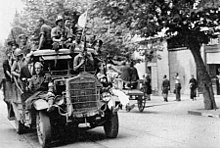
Although other European countries such as Norway, the Netherlands, and France also had partisan movements and collaborationist governments with Nazi Germany, armed confrontation between compatriots was most intense in Italy, making the Italian case unique.[149] In 1965, the definition of "Italian Civil War" was used for the first time by fascist politician and historian Giorgio Pisanò in his books,[150] [151] while Claudio Pavone's book Una guerra civile. Saggio storico sulla moralità della Resistenza (A Civil War. Historical Essay On the Morality Of the Resistance), published in 1991, led to the term "Italian Civil War" being used more frequently by Italian[nb 1] and international[152][153] historiography.

Soon after being ousted, Mussolini was rescued by a German commando in Operation Eiche ("Oak"). The Germans brought Mussolini to northern Italy where he set up a Fascist puppet state, the Italian Social Republic. Meanwhile, the Allies advanced in southern Italy. In September 1943, Naples rose against the occupying German forces. The Allies organized some royalist Italian troops into the Italian Co-Belligerent Army, while troops loyal to Mussolini continued to fight alongside Nazi Germany in the Esercito Nazionale Repubblicano, the National Republican Army. In addition, a large Italian resistance movement started a long guerrilla war against the German and Fascist forces. As consequence, the country descended into civil war, with the Italian Co-belligerent Army and the resistance movement, supported by the Allies, contended the Social Republic's forces and its German allies. The Germans, often helped by Fascists, committed several atrocities against Italian civilians in occupied zones, such as the Ardeatine massacre and the Sant'Anna di Stazzema massacre. The Kingdom of Italy declared war on Nazi Germany on 13 October 1943;[154][155] tensions between the Axis Powers and the Italian military were rising following the failure to defend Sicily, with New York Times correspondent Milton Bracker noting that "Italian hatred of the Germans unquestionably grew as the fighting spirit waned, and episodes between German and Italian soldiers and civilians before and after the armistice have shown pretty clearly a complete and incontrovertible end of all sympathy between the former Axis partners."[154]
On 4 June 1944, the German occupation of Rome came to an end as the Allies advanced. As the Allies advanced north, they encountered increasingly difficult terrain, as mountains offered excellent defensive position to Axis forces. The final Allied victory over the Axis in Italy did not come until the spring offensive of 1945, after Allied troops had breached the Gothic Line, leading to the surrender of German and Fascist forces in Italy on 2 May shortly before Germany finally surrendered ending World War II in Europe on 8 May. It is estimated that between September 1943 and April 1945 some 60,000 Allied and 50,000 German soldiers died in Italy.[nb 2]

During World War II, Italian war crimes included extrajudicial killings and ethnic cleansing[157] by deportation of about 25,000 people, mainly Jews, Croats, and Slovenians, to the Italian concentration camps, such as Rab, Gonars, Monigo, Renicci di Anghiari and elsewhere. Yugoslav Partisans perpetrated their own crimes against the local ethnic Italian population (Istrian Italians and Dalmatian Italians) during and after the war, including the foibe massacres. In Italy and Yugoslavia, unlike in Germany, few war crimes were prosecuted.[158][159][160][161]
On 25 April 1945 the National Liberation Committee for Northern Italy proclaimed a general insurrection in all the territories still occupied by the Nazi-fascists, indicating to all the partisan forces active in Northern Italy that were part of the Volunteer Corps of Freedom to attack the fascist and German garrisons by imposing the surrender, days before the arrival of the Allied troops; at the same time, the National Liberation Committee for Northern Italy personally issued legislative decrees,[162] assuming power "in the name of the Italian people and as a delegate of the Italian Government", establishing among other things the death sentence for all fascist hierarchs,[163] "Surrender or die!" was the rallying call of the partisans that day and those immediately following. Today the event is commemorated in Italy every 25 April by the Liberation Day, National Day introduced on 22 April 1946, which celebrates the liberation of the country from fascism.[164]
Mussolini was captured on 27 April 1945, by communist Italian partisans near the Swiss border as he tried to escape Italy. On the next day, he was executed for high treason, as sentenced in absentia by a tribunal of the CLN. Afterwards, the bodies of Mussolini, his mistress, and about fifteen other Fascists were taken to Milan where they were displayed to the public. Days later on 2 May 1945, the German forces in Italy surrendered. The government of Badoglio had remained in being for some nine months. On 9 June 1944 he was replaced as Prime Minister by the 70-year-old anti-fascist leader Ivanoe Bonomi. In June 1945 Bonomi was in turn replaced by Ferruccio Parri, who in turn gave way to Alcide de Gasperi on 4 December 1945. Finally, De Gasperi supervised the transition to a Republic following the abdication of Vittorio Emanuele III on 9 May 1946, the one-month-long reign of his son Umberto II ("King of May") and the Constitutional Referendum that abolished the monarchy; De Gasperi briefly became acting Head of State as well as Prime Minister on 18 June 1946, but ceded the former role to Provisional President Enrico de Nicola ten days later.
Anti-fascism against Mussolini's regime
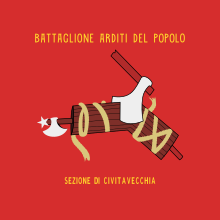
In Italy, Mussolini's Fascist regime used the term anti-fascist to describe its opponents. Mussolini's secret police was officially known as the Organization for Vigilance and Repression of Anti-Fascism. During the 1920s in the Kingdom of Italy, anti-fascists, many of them from the labor movement, fought against the violent Blackshirts and against the rise of the fascist leader Benito Mussolini. After the Italian Socialist Party (PSI) signed a pacification pact with Mussolini and his Fasces of Combat on 3 August 1921,[165] and trade unions adopted a legalist and pacified strategy, members of the workers' movement who disagreed with this strategy formed Arditi del Popolo.[166]
The Italian General Confederation of Labour (CGL) and the PSI refused to officially recognize the anti-fascist militia and maintained a non-violent, legalist strategy, while the Communist Party of Italy (PCd'I) ordered its members to quit the organization. The PCd'I organized some militant groups, but their actions were relatively minor.[167] The Italian anarchist Severino Di Giovanni, who exiled himself to Argentina following the 1922 March on Rome, organized several bombings against the Italian fascist community.[168] The Italian liberal anti-fascist Benedetto Croce wrote his Manifesto of the Anti-Fascist Intellectuals, which was published in 1925.[169][page needed] Other notable Italian liberal anti-fascists around that time were Piero Gobetti and Carlo Rosselli.[170]
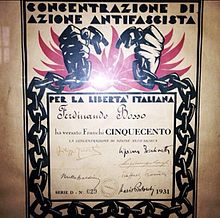
Concentrazione Antifascista Italiana (English: Italian Anti-Fascist Concentration), officially known as Concentrazione d'Azione Antifascista (Anti-Fascist Action Concentration), was an Italian coalition of Anti-Fascist groups which existed from 1927 to 1934. Founded in Nérac, France, by expatriate Italians, the CAI was an alliance of non-communist anti-fascist forces (republican, socialist, nationalist) trying to promote and to coordinate expatriate actions to fight fascism in Italy; they published a propaganda paper entitled La Libertà.[171][172][173]

Giustizia e Libertà (English: Justice and Freedom) was an Italian anti-fascist resistance movement, active from 1929 to 1945.[174] The movement was cofounded by Carlo Rosselli,[174] Ferruccio Parri, who later became Prime Minister of Italy, and Sandro Pertini, who became President of Italy, were among the movement's leaders.[175] The movement's members held various political beliefs but shared a belief in active, effective opposition to fascism, compared to the older Italian anti-fascist parties. Giustizia e Libertà also made the international community aware of the realities of fascism in Italy, thanks to the work of Gaetano Salvemini.
Many Italian anti-fascists participated in the Spanish Civil War with the hope of setting an example of armed resistance to Franco's dictatorship against Mussolini's regime; hence their motto: "Today in Spain, tomorrow in Italy".[176]
Between 1920 and 1943, several anti-fascist movements were active among the Slovenes and Croats in the territories annexed to Italy after World War I, known as the Julian March.[177][178] The most influential was the militant insurgent organization TIGR, which carried out numerous sabotages, as well as attacks on representatives of the Fascist Party and the military.[179][180] Most of the underground structure of the organization was discovered and dismantled by the Organization for Vigilance and Repression of Anti-Fascism (OVRA) in 1940 and 1941,[181] and after June 1941 most of its former activists joined the Slovene Partisans.
During World War II, many members of the Italian resistance left their homes and went to live in the mountains, fighting against Italian fascists and German Nazi soldiers during the Italian Civil War. Many cities in Italy, including Turin, Naples and Milan, were freed by anti-fascist uprisings.[182]
End of the Kingdom of Italy (1946)
Italian constitutional referendum

Much like Japan and Germany, the aftermath of World War II left Italy with a destroyed economy, a divided society, and anger against the monarchy for its endorsement of the Fascist regime for the previous twenty years.
Even before the rise of the Fascists, the monarchy was seen to have performed poorly, with society extremely divided between the wealthy North and poor South. World War I resulted in Italy making few gains and was seen as what fostered the rise of Fascism. These frustrations contributed to a revival of the Italian republican movement.[183] By the spring of 1944, it was obvious Victor Emmanuel was too tainted by his previous support for Mussolini to have any further role. He transferred his constitutional powers to Crown Prince Umberto, whom he named Lieutenant General of the Realm and de facto regent.

Victor Emmanuel III nominally remained King until shortly before a 1946 referendum on whether to remain a monarchy or become a republic. On 9 May 1946, he abdicated in favour of the Crown Prince, who then ascended as King Umberto II. However, on 2 June 1946, the republican side won 54% of the vote, and Italy officially became a republic, a day celebrated since as Festa della Repubblica. This was the first time that Italian women voted at the national level, and the second time overall considering the local elections that were held a few months earlier in some cities.[184][185]
The table of results shows some relevant differences in the different parts of Italy. The peninsula seemed to be drastically cut into two as if there were two different homogeneous countries: the North for the republic (with 66.2%); the South for the monarchy (with 63.8%). Some monarchist groups claimed that there was manipulation by northern republicans, socialists and communists. Others argued that Italy was still too chaotic in 1946 to have an accurate referendum.
Umberto II decided to leave Italy on 13 June to avoid the clashes between monarchists and republicans, already manifested in bloody events in various Italian cities, for fear they could extend throughout the country. He went into exile in Portugal.[186] From 1 January 1948, with the entry into force of the Constitution of the Italian Republic, the male descendants of Umberto II of Savoy were banned from entering Italy; the provision being repealed in 2002.[187]
Aftermath
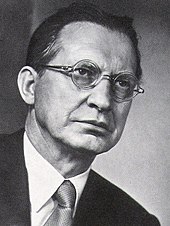
The Republican Constitution, resulting from the work of a Constituent Assembly formed by the representatives of all the anti-fascist forces that contributed to the defeat of Nazi and Fascist forces during the Italian Civil War,[188] was approved on 1 January 1948.
Under the Treaty of Peace with Italy, 1947, Istria, Kvarner, most of the Julian March as well as the Dalmatian city of Zara was annexed by Yugoslavia causing the Istrian-Dalmatian exodus, which led to the emigration from 1943 to 1960 of between 230,000 and 350,000 local ethnic Italians (Istrian Italians and Dalmatian Italians), the others being ethnic Slovenians, ethnic Croatians, and ethnic Istro-Romanians, choosing to maintain Italian citizenship.[189] Later, the Free Territory of Trieste was divided between the two states. Italy also lost its colonial possessions, formally ending the Italian Empire. The Italian border that applies today has existed since 1975, when Trieste was formally re-annexed to Italy.
Fears of a possible Communist takeover proved crucial for the first universal suffrage electoral outcome on 18 April 1948, when the Christian Democrats, under the leadership of Alcide De Gasperi, obtained a landslide victory.[190][191] Consequently, in 1949 Italy became a member of NATO. The Marshall Plan helped to revive the Italian economy which, until the late 1960s, enjoyed a period of sustained economic growth commonly called the "Economic Miracle". In the 1950's, Italy became one of the six founding countries of the European Communities, following the 1952 establishment of the European Coal and Steel Community, and subsequent 1958 creations of the European Economic Community and European Atomic Energy Community. In 1993, the former two of these were incorporated into the European Union.
See also
- Unification of Italy
- Proclamation of the Kingdom of Italy
- House of Savoy
- List of prime ministers of Italy
- Military history of Italy during World War I
- Military history of Italy during World War II
- Roman Question
- Italian Empire
Notes
- ^ See as examples Renzo De Felice and Gianni Oliva.
- ^ In Alexander's Generals Blaxland quotes 59,151 Allied deaths between 3 September 1943 and 2 May 1945 as recorded at AFHQ and gives the breakdown between 20 nationalities: United States 20,442; United Kingdom, 18,737; France, Morocco, Algeria, Tunisia, Senegal and Belgium 5,241; Canada, 4,798; India, Pakistan, Nepal 4,078; Poland 2,028; New Zealand 1,688; Italy (excluding irregulars) 917; South Africa 800; Brazil 275; Greece 115; Jewish volunteers from the British Mandate in Palestine 32. In addition 35 soldiers were killed by enemy action while serving with pioneer units from Botswana, Lesotho, Swaziland, Seychelles, Mauritius, Sri Lanka, Lebanon, Cyprus and the West Indies[156]
References
- ^ Andrea L. Stanton; Edward Ramsamy; Peter J. Seybolt (2012). Cultural Sociology of the Middle East, Asia, and Africa: An Encyclopedia. p. 308. ISBN 9781412981767. Archived from the original on 27 June 2014. Retrieved 6 April 2014.
- ^ "Proclamation of Rimini". 1815. Archived from the original on 26 January 2008. Retrieved 21 February 2008.
- ^ "Scholar and Patriot". Manchester University Press – via Google Books.
- ^ "Giuseppe Garibaldi (Italian revolutionary)". Archived from the original on 26 February 2014. Retrieved 6 March 2014.
- ^ "Carbonaro – definition of Carbonaro by The Free Dictionary". The free dictionary.com. Retrieved 28 January 2015.
- ^ "Austria Two Sicilies Revolt 1820–1821". Onwar.com. Archived from the original on 11 February 2001. Retrieved 30 September 2014.
- ^ Michael Broers, "Revolution as Vendetta: Patriotism in Piedmont, 1794–1821." Historical Journal 33#3 (1990): 573–597.
- ^ Astarita, Tommaso (2000). Between Salt Water And Holy Water: A History Of Southern Italy. p. 264.
- ^ Hales, E.E.Y. (1954). Pio Nono: A Study in European Politics and Religion in the Nineteenth Century. P.J. Kenedy.
- ^ Maiorino, Tarquinio; Marchetti Tricamo, Giuseppe; Zagami, Andrea (2002). Il tricolore degli italiani. Storia avventurosa della nostra bandiera (in Italian). Arnoldo Mondadori Editore. p. 18. ISBN 978-88-04-50946-2.
- ^ "Fratelli d'Italia" (in Italian). Retrieved 1 October 2021.
- ^ Smith 1997, p. 15.
- ^ ""Un nizzardo su quattro prese la via dell'esilio" in seguito all'unità d'Italia, dice lo scrittore Casalino Pierluigi" (in Italian). 28 August 2017. Retrieved 14 May 2021.
- ^ "Times article dated February 13, 1871". Retrieved 20 October 2011.
- ^ "I Vespri Nizzardi del 1871: conferenza storica e annullo speciale". Archived from the original on 9 September 2012. Retrieved 20 October 2011.
- ^ J. Woolf Stuart, Il risorgimento italiano, Turin, Einaudi, 1981, p. 44 (In Italian).
- ^ Giuseppe André, Nizza negli ultimi quattro anni, Nice, Editore Gilletta, 1875, pp. 334-335 (In Italian).
- ^ Harry Hearder, Cavour (1994 p 203-5.
- ^ Antonio Carlo, "Against the 'Southern Question'" (1974)
- ^ Nelson Moe, The View from Vesuvius: Italian Culture and the Southern Question (2002)
- ^ a b Roland Sarti, Italy: A Reference Guide from the Renaissance to the Present (2004) pp 567–568
- ^ Giuseppe Massari, Stefano Castagnola, Il brigantaggio nelle province napoletane, Fratelli Ferrario, 1863, p.17, 20
- ^ a b Pozzetta, George E., Bruno Ramirez, and Robert F. Harney. The Italian Diaspora: Migration across the Globe. Toronto: Multicultural History Society of Ontario, 1992.
- ^ a b McDonald, J.S. (October 1958). "Some Socio-Economic Emigration Differentials in Rural Italy, 1902-1913". Economic Development and Cultural Change. 7 (1): 55–72. doi:10.1086/449779. ISSN 0013-0079. S2CID 153889304.
- ^ Sori, Ercole. L'emigrazione italiana dall' Unità alla Seconda Guerra Mondiale. First chapter
- ^ a b Gabaccia, Donna (200). Italy's Many Diasporas. New York: Routledge. pp. 58–80.
- ^ Pozzetta, George E. (1980). Pane e Lavoro: The Italian American Working Class. Toronto: Multicultural History Society of Ontorio.
- ^ Hatton, Timothy J. and Jeffrey G. Williamson; Williamson, Jeffrey G (September 1994). "What Drove the Mass Migrations from Europe in the Late Nineteenth Century?" (PDF). Population and Development Review. 20 (3). Population Council: 533–559. doi:10.2307/2137600. ISSN 0098-7921. JSTOR 2137600.
- ^ "Il Vittoriano – Roma" (in Italian). 26 March 2014. Retrieved 7 January 2018.
- ^ a b "Il mito della "lampada perenne"" (in Italian). Retrieved 12 February 2018.
- ^ The Vatican City by the Lateran Treaty of 1929 became an independent country, an enclave surrounded by Italy.
- ^ Arnaldi, Girolamo. Italy and Its Invaders. Harvard University Press, 2005. p. 194. ISBN 0-674-01870-2.
- ^ "Museo Centrale del Risorgimento di Roma". Istituto per la storia del Risorgimento italiano (in Italian). Retrieved 6 July 2018.
- ^ Smith (1997), pp. 95–107
- ^ Smith (1997), p. 123.
- ^ Bosworth, R.J.B. (2013). Italy and the Wider World: 1860–1960. Routledge. p. 29. ISBN 978-1-134-78088-4.
- ^ (Smith (1997), pp. 128–132.)
- ^ (Smith (1997), pp. 136–138.)
- ^ (Smith (1997), p. 137.)
- ^ (Smith (1997), p. 139.)
- ^ Smith (1997), pp. 115–117
- ^ (Smith (1997), pp. 117–19.)
- ^ Glen St. J. Barclay, The Rise and Fall of the New Roman Empire (1973). pp. 29.)
- ^ Barclay (1973), pp. 29.
- ^ a b c (Barclay (1973), pp. 32.)
- ^ (Barclay (1973), pp. 33–34.)
- ^ (Barclay (1997), pp. 34.)
- ^ (Barclay (1973), pp. 35.)
- ^ (Denis Mack Smith, Modern Italy; A Political History (1997). University of Michigan Press. ISBN 0-472-10895-6, pp. 199.)
- ^ (Smith (1997), pp. 209–210.)
- ^ (Smith (1997), pp. 199.)
- ^ (Smith (1997), pp. 211.)
- ^ Martin Clark, Modern Italy: 1871–1995 (1996) ch 7
- ^ Frank J. Coppa. "Giolitti and the Gentiloni Pact between Myth and Reality," Catholic Historical Review (1967) 53#2 pp. 217–228 in JSTOR
- ^ Alexander De Grand, "Giovanni Giolitti: a pessimist as modernizer," Journal of Modern Italian Studies (2001) 6#1 pp 57–67
- ^ (Bosworth, R. J. B. (2005). Mussolini's Italy. New Work: Allen Lane, 2005. ISBN 0-7139-9697-8, pp. 50.)
- ^ a b (Bosworth (2005), pp. 49.)
- ^ Burgwyn, H. James (1997). Italian foreign policy in the interwar period, 1918–1940. Greenwood Publishing Group. p. 4. ISBN 0-275-94877-3.
- ^ Schindler, John R. (2001). Isonzo: The Forgotten Sacrifice of the Great War. Greenwood Publishing Group. p. 303. ISBN 0-275-97204-6.
- ^ Mack Smith, Denis (1982). Mussolini. Knopf. p. 31. ISBN 0-394-50694-4.
- ^ Paoletti, Ciro (2008). A Military History of Italy. Greenwood Publishing Group. p. 150. ISBN 978-0-275-98505-9.
... Ludendorff wrote: In Vittorio Veneto, Austria did not lose a battle, but lose the war and itself, dragging Germany in its fall. Without the destructive battle of Vittorio Veneto, we would have been able, in a military union with the Austro-Hungarian monarchy, to continue the desperate resistance through the whole winter, in order to obtain a less harsh peace, because the Allies were very fatigued.
- ^ "Il 1861 e le quattro Guerre per l'Indipendenza (1848-1918)" (in Italian). 6 March 2015. Archived from the original on 19 March 2022. Retrieved 12 March 2021.
- ^ "La Grande Guerra nei manifesti italiani dell'epoca" (in Italian). Archived from the original on 23 September 2015. Retrieved 12 March 2021.
- ^ Genovesi, Piergiovanni (11 June 2009). Il Manuale di Storia in Italia, di Piergiovanni Genovesi (in Italian). ISBN 9788856818680. Retrieved 12 March 2021.
- ^ William A. Renzi, In the Shadow of the Sword: Italy's Neutrality and Entrance Into the Great War, 1914–1915 (1987).
- ^ Lowe, C.J. (1969). "Britain and Italian Intervention 1914–1915". Historical Journal. 12 (3): 533–548. doi:10.1017/s0018246x00007275. S2CID 162738142.
- ^ Martin Clark, Modern Italy: 1871–1995 (1996) pp 180–85
- ^ Denis Mack Smith, Italy: A Modern History (1969) pp 292–305.
- ^ "SAVOIA AOSTA, Emanuele Filiberto di, duca d'Aosta" (in Italian). Retrieved 23 November 2021.
- ^ "Il più grande Sacrario Militare Italiano".
- ^ Martin Clark, Modern Italy: 1871–1995 (1996) pp 185–94.
- ^ Smith, Italy: A Modern History (1969) pp 307–13.
- ^ Luigi Tomassini, "Industrial Mobilization and the labour market in Italy during the First World War," Social History, (1991), 16#1 pp 59–87
- ^ Tucker, European Powers in the First World War, p 375–76
- ^ Burgwyn, H. James: Italian foreign policy in the interwar period, 1918–1940. Greenwood Publishing Group, 1997. p. 4. ISBN 0-275-94877-3
- ^ Schindler, John R.: Isonzo: The Forgotten Sacrifice of the Great War. Greenwood Publishing Group, 2001. p. 303. ISBN 0-275-97204-6
- ^ Mack Smith, Denis: Mussolini. Knopf, 1982. p. 31. ISBN 0-394-50694-4
- ^ Giorgio Mortara, La Salute pubblica in Italia durante e dopo la Guerra, G. Laterza & figli, 1925, pp. 28-29, 165.
- ^ Hersch, Liebmann (1927). La mortalité causée par la guerre mondiale (in French). The International Review of Statistics. pp. 52–59.
- ^ Smith (1997), p. 293.
- ^ Bosworth (2005), pp. 112–113.
- ^ G.Sabbatucci, La vittoria mutilata, in AA.VV., Miti e storia dell'Italia unita, Il Mulino, Bologna 1999, pp.101-106
- ^ Smith (1997), p. 284.
- ^ Gregor, Anthony James (1979). Young Mussolini and the Intellectual Origins of Fascism. U. of California Press. p. 200. ISBN 9780520037991. Archived from the original on 2015-09-21. Retrieved 2015-08-14.
- ^ Clark, Martin. 1996. Modern Italy: 1871–1995. (2nd ed. Longman), p. 183.
- ^ "Mussolini wounded by mortar bomb". HISTORY.com. Retrieved Sep 22, 2020.
- ^ Passmore Women, Gender and Fascism, pp. 11–16.
- ^ Smith (1997), pp. 284–286.
- ^ Smith (1997), pp. 284.
- ^ Denis Mack Smith (1983). Mussolini: A Biography. New York: Random House. p. 35.
- ^ Bosworth 2005, p. 112.
- ^ Christopher Duggan, Fascist Voices: An Intimate History of Mussolini's Italy (2012) excerpt
- ^ Payne, Stanley G. (1996). A History of Fascism, 1914–1945. U of Wisconsin Press. p. 122. ISBN 978-0-299-14873-7.
- ^ "Trieste, quando erano gli italiani a fare pulizia etnica" (in Italian). 10 February 2013. Retrieved 10 May 2021.
- ^ A Historical Outline Of Istria Archived 11 January 2008 at the Wayback Machine, razor.arnes.si. Retrieved 30 December 2015.
- ^ "Italiani di Dalmazia: 1919-1924" di Luciano Monzali
- ^ "Il primo esodo dei Dalmati: 1870, 1880 e 1920 - Secolo Trentino".
- ^ Društvo književnika Hrvatske, Bridge, Volume 1995, Numbers 9–10, Croatian literature series – Ministarstvo kulture, Croatian Writer's Association, 1989
- ^ Pamela Ballinger (7 April 2009). Genocide: Truth, Memory, and Representation. p. 295. ISBN 978-0822392361. Retrieved 30 December 2015.
- ^ Tesser, L. (14 May 2013). Ethnic Cleansing and the European Union – Page 136, Lynn Tesser. ISBN 9781137308771.
- ^ Ballinger, Pamela (2003). History in Exile: Memory and Identity at the Borders of the Balkans. Princeton University Press. p. 103. ISBN 0691086974.
- ^ Anna C. Bramwell, University of Oxford, UK (1988). Refugees in the Age of Total War. pp. 139, 143. ISBN 9780044451945.
{{cite book}}: CS1 maint: multiple names: authors list (link) - ^ Oscar Benvenuto (ed.): "South Tyrol in Figures 2008", Provincial Statistics Institute of the Autonomous Province of South Tyrol, Bozen/Bolzano 2007, p. 19, Table 11
- ^ a b c Steininger, Rolf (2003) South Tyrol: A Minority Conflict of the Twentieth Century , Routledge, p. 23-24
- ^ "Vatican City turns 91". Vatican News. 11 February 2020. Retrieved 2 September 2021.
The world's smallest sovereign state was born on February 11, 1929, with the signing of the Lateran Treaty between the Holy See and the Kingdom of Italy
- ^ A History of Western Society (Tenth ed.). Bedford/St. Martin's. 2010. p. 900.
- ^ Constitution of Italy, article 7.
- ^ Lee, Stephen J. (2008). European Dictatorships, 1918–1945. Routledge. pp. 157–58. ISBN 978-0-415-45484-1.
- ^ Aristotle A. Kallis. Fascist ideology: territory and expansionism in Italy and Germany, 1922–1945. London, England, UK; New York City, USA: Routledge, 2000, pp. 41.
- ^ Terence Ball, Richard Bellamy. The Cambridge History of Twentieth-Century Political Thought. Pp. 133
- ^ Jozo Tomasevich. War and Revolution in Yugoslavia 1941–1945: Occupation and Collaboration. Stanford, California, USA: Stanford University Press, 2001. P. 131.
- ^ Larry Wolff. Venice And the Slavs: The Discovery of Dalmatia in the Age of Enlightenment. Stanford, California, USA: Stanford University Press, P. 355.
- ^ Aristotle A. Kallis. Fascist Ideology: Expansionism in Italy and Germany 1922–1945. London, England; UK; New York, New York, USA: Routledge, 2000. P. 118.
- ^ Mussolini Unleashed, 1939–1941: Politics and Strategy in Fascist Italy's Last War. Cambridge, England, UK: Cambridge University Press, 1986, 1999. P. 38.
- ^ a b Davide Rodogno. Fascism's European Empire: Italian Occupation during the Second World War. Cambridge, England, UK: Cambridge University Press, 2006. P. 88.
- ^ From the Industrial Revolution to World War II in East Central Europe. LIT Verlag. 2011. p. 193. ISBN 9783643901293.
- ^ Smith. 1983. p172
- ^ Clodfelter 2017: 338
- ^ Clodfelter 2017: 355
- ^ Gilbert, Martin (introduction). 1939. The Illustrated London News: Marching to War, 1933–1939. Toronto, Canada: Doubleday Canada Ltd. Pp 137
- ^ Smith 1983. p. 397
- ^ Smith 1997. p. 401
- ^ Smith. 1983. p. 401
- ^ a b c d e f g Shinn, Christopher A. (2019) [2016]. "Inside the Italian Empire: Colonial Africa, Race Wars, and the 'Southern Question'". In Kirkland, Ewan (ed.). Shades of Whiteness. Leiden and Boston: Brill Publishers. pp. 35–51. doi:10.1163/9781848883833_005. ISBN 978-1-84888-383-3. S2CID 201401541.
- ^ a b Gentile, Emilio (2004). "Fascism in Power: The Totalitarian Experiment". In Griffin, Roger; Feldman, Matthew (eds.). Fascism: Critical Concepts in Political Science. Vol. IV (1st ed.). London and New York: Routledge. pp. 44–45. ISBN 9780415290159.
- ^ a b c Negash, Tekeste (1997). "Introduction: The legacy of Italian colonialism". Eritrea and Ethiopia: The Federal Experience. Uppsala: Nordiska Afrikainstitutet. pp. 13–17. ISBN 978-91-7106-406-6. OCLC 1122565258.
- ^ Giovanni Sale (2009). Le leggi razziali in Italia e il Vaticano. Editoriale Jaca Book. p. 72. ISBN 9788816409071.
- ^ a b Philip Morgan (10 November 2003). Italian Fascism, 1915-1945. Palgrave Macmillan. p. 202. ISBN 978-0-230-80267-4.
- ^ Davide Rodogno (3 August 2006). Fascism's European Empire: Italian Occupation During the Second World War. Cambridge University Press. p. 65. ISBN 978-0-521-84515-1.
- ^ Joshua D. Zimmerman, Jews in Italy Under Fascist and Nazi Rule, 1922-1945, pp. 119-120
- ^ Bernardini, Gene (1977). "The Origins and Development of Racial Anti-Semitism in Fascist Italy". The Journal of Modern History. 49 (3): 431–453. doi:10.1086/241596. S2CID 143652167.
- ^ Robinson, E. M. (1988). "Race as a Factor in Mussolini's Policy in Africa and Europe". Journal of Contemporary History. 23 (1): 37–58. doi:10.1177/002200948802300103. S2CID 161818702.
- ^ Goeschel, Christian (2012). "Italia docet? The Relationship between Italian Fascism and Nazism Revisited". European History Quarterly. 42 (3): 480–492. doi:10.1177/0265691412448167. hdl:1885/59166. S2CID 143799280.
- ^ Adler, Franklin H. (2005). "Why Mussolini turned on the Jews". Patterns of Prejudice. 39 (3): 285–300. doi:10.1080/00313220500198235. S2CID 143090861.
- ^ Gunther, John (1940). Inside Europe. New York: Harper & Brothers. p. 262.
- ^ Smith 1997 p. 405.
- ^ Smith 1997 p. 406.
- ^ Smith 1997 p. 412.
- ^ Smith 1997 pp. 412–413.
- ^ Detwiler, Donald S.; Burdick, Charles B.; Rohwer, Jürgen (1979). World War II German Military Studies. p. 96. ISBN 978-0-8240-4313-1.
- ^ Knox, MacGregor (2000). Hitler's Italian Allies: Royal Armed Forces, Fascist Regime, and the War of 1940–1943. Cambridge UP. p. 10. ISBN 978-1-139-43203-0.
- ^ Polmar, Norman; Allen, Thomas B. (2012). World War II: the Encyclopedia of the War Years, 1941–1945. p. 421. ISBN 978-0-486-47962-0.
- ^ James J. Sadkovich, "Understanding Defeat: Reappraising Italy's Role in World War II," Journal of Contemporary History (1989) 24#1 pp. 27–61 online.
- ^ a b "El Alamein 'lost with great honour'". ANSA.it. 31 October 2014.
- ^ Arrigo Petacco, L'armata nel deserto. Il segreto di El Alamein, Mondadori, 2002, ISBN 88-04-50824-8
- ^ Rommel & Pimlott (1994), p. 128
- ^ Jon E. Lewis (1999), The Mammoth Book of True War Stories, p. 318
- ^ "El Alamein 2" (in Italian). Ardito2000 website. Archived from the original on 22 July 2011. Retrieved 19 July 2009.
- ^ De Felice, Renzo (1995). Rosso e Nero [Red and Black] (in Italian). Baldini & Castoldi. p. 22. ISBN 88-85987-95-8.
- ^ Storia della guerra civile in Italia
- ^ See the books from Italian historian Giorgio Pisanò Storia della guerra civile in Italia, 1943–1945, 3 voll., Milano, FPE, 1965 and the book L'Italia della guerra civile ("Italy of civil war"), published in 1983 by the Italian writer and journalist Indro Montanelli as the fifteen volume of the Storia d'Italia ("History of Italy") by the same author.
- ^ See as examples the interview to French historian Pierre Milza on the Corriere della Sera of 14 July 2005 (in Italian) and the lessons of historian Thomas Schlemmer at the University of Munchen (in German).
- ^ Payne, Stanley G. (2011). Civil War in Europe, 1905-1949. Cambridge University Press. p. 202. ISBN 9781139499644.
- ^ a b "Oct. 13, 1943 | Italy Switches Sides in World War II". The New York Times. 13 October 2011. Retrieved 29 August 2021.
- ^ "Italy declares war on Germany". History.com. Retrieved 30 August 2021.
- ^ Blaxland (1979), p. 11
- ^ James H. Burgwyn (2004). General Roatta's war against the partisans in Yugoslavia: 1942 Archived 21 September 2013 at the Wayback Machine, Journal of Modern Italian Studies, Volume 9, Number 3, pp. 314–329(16)
- ^ Italy's bloody secret (archived by WebCite), written by Rory Carroll, Education, The Guardian, June 2001
- ^ Effie Pedaliu (2004) JSTOR 4141408? Britain and the 'Hand-over' of Italian War Criminals to Yugoslavia, 1945–48. Journal of Contemporary History. Vol. 39, No. 4, Special Issue: Collective Memory, pp. 503–529
- ^ Oliva, Gianni (2006) «Si ammazza troppo poco». I crimini di guerra italiani. 1940–43 Archived 20 July 2011 at the Wayback Machine, Mondadori, ISBN 88-04-55129-1
- ^ Baldissara, Luca & Pezzino, Paolo (2004). Crimini e memorie di guerra: violenze contro le popolazioni e politiche del ricordo, L'Ancora del Mediterraneo. ISBN 978-88-8325-135-1
- ^ There are three fundamental decrees that seal the legislative work, already active since 1944: All powers to CLNAI; Decree for the administration of justice; Of socialization.
- ^ "Fondazione ISEC - cronologia dell'insurrezione a Milano - 25 aprile" (in Italian). Retrieved 14 February 2022.
- ^ "DECRETO LEGISLATIVO LUOGOTENENZIALE 22 aprile 1946, n. 185" (in Italian). Retrieved 28 April 2015.
- ^ Charles F. Delzell, edit., Mediterranean Fascism 1919-1945, New York, NY, Walker and Company, 1971, p. 26
- ^ "Working Class Defence Organization, Anti-Fascist Resistance and the Arditi Del Popolo in Turin, 1919-22" (PDF). Archived (PDF) from the original on 19 March 2022. Retrieved 23 September 2021.
- ^ Working Class Defence Organization, Anti-Fascist Resistance and the Arditi Del Popolo in Turin, 1919-22 Archived 19 March 2022 at the Wayback Machine, Antonio Sonnessa, in the European History Quarterly, Vol. 33, No. 2, 183-218 (2003)
- ^ "Anarchist Century". Anarchist_century.tripod.com. Retrieved 7 April 2014.
- ^ David Ward Antifascisms: Cultural Politics in Italy, 1943–1946
- ^ James Martin, 'Piero Gobetti's Agonistic Liberalism', History of European Ideas, 32, (2006), pp. 205–222.
- ^ Pugliese, Stanislao G.; Pugliese, Stanislao (2004). Fascism, Anti-fascism, and the Resistance in Italy: 1919 to the Present. Rowman & Littlefield. p. 10. ISBN 978-0-7425-3123-9. Retrieved 11 June 2020.
- ^ Tollardo, Elisabetta (2016). Fascist Italy and the League of Nations, 1922-1935. Springer. p. 152. ISBN 978-1-349-95028-7.
- ^ Scala, Spencer M. Di (1988). Renewing Italian Socialism: Nenni to Craxi. Oxford University Press. pp. 6–8. ISBN 978-0-19-536396-8. Retrieved 11 June 2020.
- ^ a b James D. Wilkinson (1981). The Intellectual Resistance Movement in Europe. Harvard University Press. p. 224.
- ^ Stanislao G. Pugliese (1999). Carlo Rosselli: socialist heretic and antifascist exile. Harvard University Press. p. 51.
- ^ "«Oggi in Spagna, domani in Italia»" (in Italian). Retrieved 12 May 2023.
- ^ Milica Kacin Wohinz, Jože Pirjevec, Storia degli sloveni in Italia : 1866–1998 (Venice: Marsilio, 1998)
- ^ Milica Kacin Wohinz, Narodnoobrambno gibanje primorskih Slovencev : 1921–1928 (Trieste: Založništvo tržaškega tiska, 1977)
- ^ Milica Kacin Wohinz, Prvi antifašizem v Evropi (Koper: Lipa, 1990)
- ^ Mira Cenčič, TIGR : Slovenci pod Italijo in TIGR na okopih v boju za narodni obstoj (Ljubljana: Mladinska knjiga, 1997)
- ^ Vid Vremec, Pinko Tomažič in drugi tržaški proces 1941 (Trieste: Založništvo tržaškega tiska, 1989)
- ^ "Intelligence and Operational Support for the Anti-Nazi Resistance". Darbysrangers.tripod.com.
- ^ "Italia", Dizionario enciclopedico italiano (in Italian), vol. VI, Treccani, 1970, p. 456
- ^ "Italia 1946: le donne al voto, dossier a cura di Mariachiara Fugazza e Silvia Cassamagnaghi" (PDF). Archived from the original (PDF) on 20 May 2011. Retrieved 30 May 2011.
- ^ "La prima volta in cui le donne votarono in Italia, 75 anni fa". Il Post (in Italian). 10 March 2021. Retrieved 24 August 2021.
- ^ "UMBERTO II re d'Italia in "Enciclopedia Italiana"" (in Italian). Retrieved 4 November 2017.
- ^ "Vittorio Emanuele di Savoia: "Fedeltà alla Costituzione"". Retrieved 1 June 2017.
- ^ Smyth, Howard McGaw Italy: From Fascism to the Republic (1943–1946) The Western Political Quarterly vol. 1 no. 3 (pp. 205–222), September 1948.JSTOR 442274
- ^ Tobagi, Benedetta. "La Repubblica italiana | Treccani, il portale del sapere". Treccani.it. Retrieved 28 January 2015.
- ^ Lawrence S. Kaplan; Morris Honick (2007). NATO 1948: The Birth of the Transatlantic Alliance. Rowman & Littlefield. pp. 52–55. ISBN 978-0-7425-3917-4.
- ^ Robert Ventresca (2004). From Fascism to Democracy: Culture and Politics in the Italian Election of 1948. University of Toronto Press. pp. 236–37.
Further reading
- Bosworth, Richard J. B. Mussolini's Italy (2005).
- Cannistraro, Philip V. ed. Historical Dictionary of Fascist Italy (1982)
- Clark, Martin. Modern Italy: 1871–1982 (1984, 3rd edn 2008)
- De Grand, Alexander. Giovanni Giolitti and Liberal Italy from the Challenge of Mass Politics to the Rise of Fascism, 1882–1922 (2001)
- De Grand, Alexander. Italian Fascism: Its Origins and Development (1989)
- Ginsborg, Paul. A History of Contemporary Italy, 1943–1988 (2003). excerpt and text search
- Lyttelton, Adrian. Liberal and Fascist Italy: 1900–1945 (Short Oxford History of Italy) (2002) excerpt and text search
- McCarthy, Patrick ed. Italy since 1945 (2000)
- Smith, D. Mack. Modern Italy: A Political History (1997) online edition, since 1860
- Toniolo, Gianni. An Economic History of Liberal Italy, 1850–1918 (1990)
- Vera Zamagni. The Economic History of Italy, 1860–1990 (1993) 413 pp. ISBN 0-19-828773-9.


